- Find A School
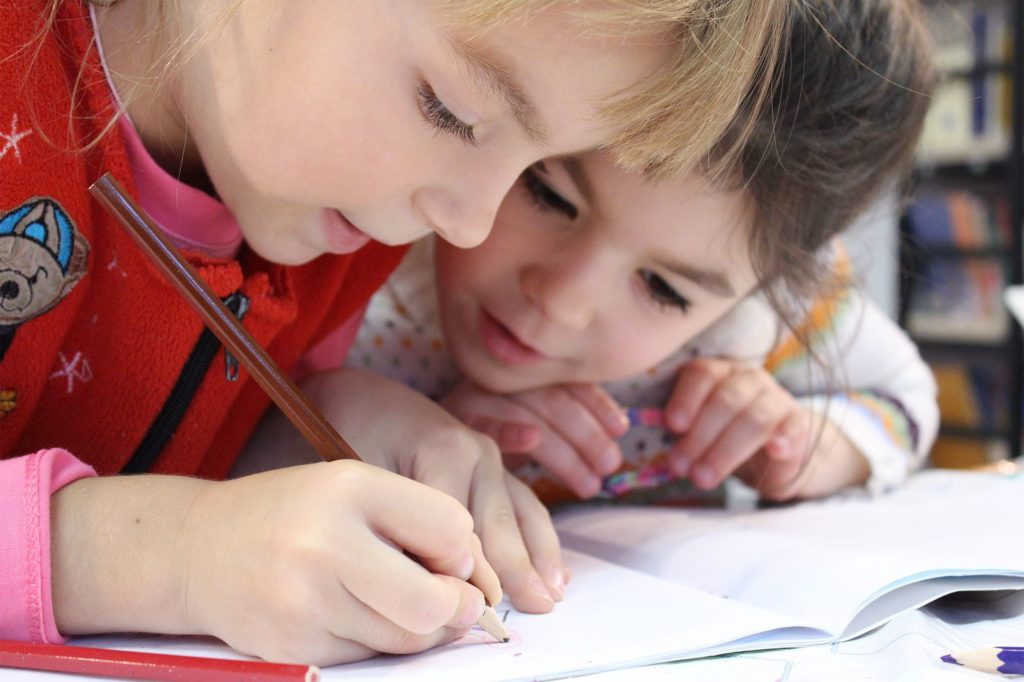

The 40 Best Books on Early Childhood Education
Latest rankings.
- Early Childhood Education Master’s Online
- Online Master’s in Educational Policy Degrees
- Masters in Physical Education Online Degrees
- Online Masters in Montessori Education
- Masters in Music Education Online
Popular Articles
- Best Online Early Childhood Education Bachelor’s
- Highest Paying Early Childhood Education Jobs
- Best Online Speech Language Pathology Masters Programs
- Early Childhood Education (ECE) Certification
- 20 Early Childhood Education Scholarships
- Best Online Master’s in Art Education
- Best Online Masters in Montessori Education
- Best Online Master’s in Elementary Education
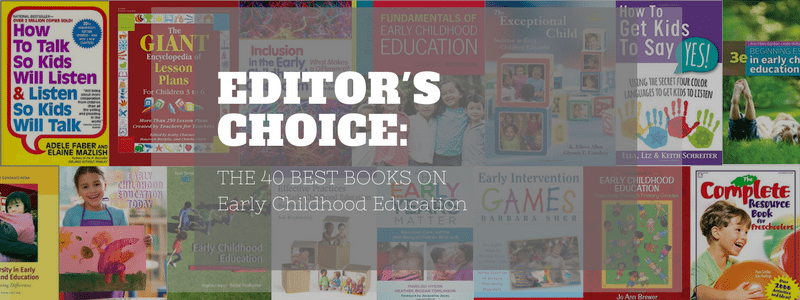
The early childhood years are so exciting. It is in these moments from birth to grade 5 that major developmental work takes place. Culture, the individual’s mind, the classroom layout, peers, situation, and circumstance affect every aspect of these early developmental years. As a 21st century early childhood educator you understand the value of keeping with contemporary models of education and the value of seeking out alternatives when the mold doesn’t fit your unique bunch of young learners. It is an exciting field that continues to develop and evolve and in some cases hearken back or sideways to discover lesser-known methods of working with young learns. Head over to Italy, Hungary, or decades ago, Russia and you will find some very inspiring insights into child development we as a culture may not have looked into. Perhaps you are also newly reinvigorated to include social justice in your education paradigm- recognizing that the early years shape what kind of people we are and will become. Our top 25 best books on early childhood education offers both comprehensive and more honed-in directives for educating to this very important group of minds. In our list we have something for parents, new teachers, seasoned veterans, and any one who is interested in delving deeper into the field of early childhood education.
1.) The Whole-Brain Child: 12 Revolutionary Strategies to Nurture Your Child’s Developing Mind by Daniel J. Siegel and Tina Payne Bryson
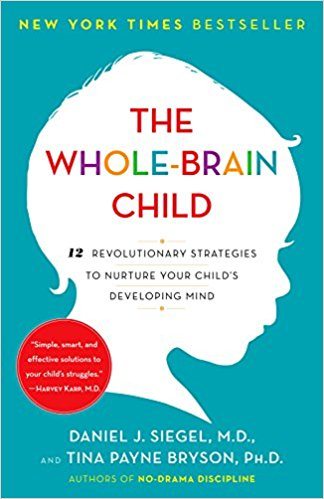
This is the landmark book on children and the brain. Pediatric psychiatrist and director of the Center for Connection Tina Payne Bryson teams up with neuropsychologist Daniel Siegel to help parents, educators, psychologists, and others broach the topic of whole-brain learning. The proposed program uses 12 strategies- just 12. Though the brain remains a great mystery to us, we are thrilled to see an attempt to present clear and concise workable tools that will help the reader actually then close the book and use them. The aim of the book is “linking different elements [of the brain] together to make a well-functioning whole.” The book includes charts, integration recommendations across early childhood strategies, and even a refrigerator guide for parents. If the aim of this book is to teach brain integration to everyone, then the method is through accessible guidelines. Payne Bryson and Siegel do a masterful job towing the line between jargon and over simplification- a real craft! This book would be a real gem of a gift for first-time parents, and veteran parents alike.
2.) How to Talk So Kids Will Listen & Listen So Kids Will Talk by Adele Faber and Elaine Mazlish
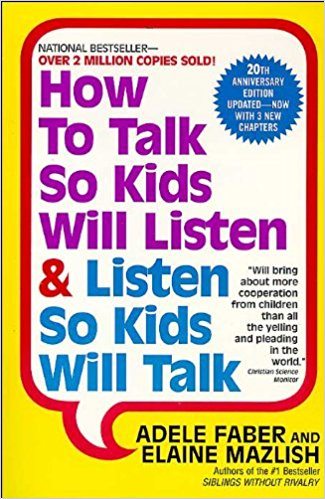
How to Talk So Kids Will Listen & Listen So Kids Will Talk has been referred to as the “parent and child bible” and is a great resource for any parent or educator. With a clear emphasis on communication, How to Talk really helps parents along with their children alleviate frustration. Clear communication begins with listening and as Faber writes “listening with full attention.” How to Talk clearly illustrates ways to turn our “natural language” or more practiced language around into language that empowers conversation. Some of the ideas in this book may flip your instincts and call into question some of your tried and true parenting responses. Chances are, that if you have picked up this book, you’re ready for a change. In addition to showing, each chapter steps you through the process so you don’t have to reach to book’s conclusion to practice new communication skills with your children. Though this book is geared more specifically to a parent-child relationship we don’t see a single reason why these principles can’t be put into practice in a classroom setting.
3.) The Exceptional Child: Inclusion in Early Childhood Education by K. Eileen Allen and Glynnis E.Cowdery
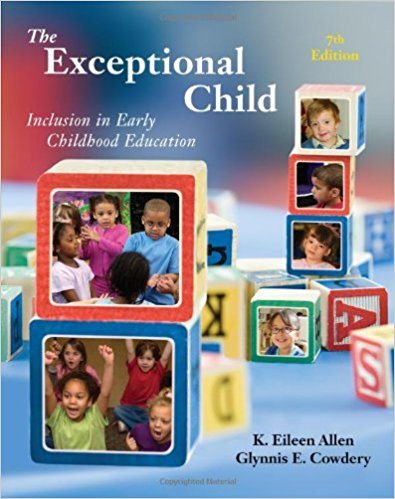
Now in its 7th edition, The Exceptional Child is for every child’s education, whether working in the department of special education or otherwise. This is a textbook and as such approaches its topic comprehensively: including the law and policy, planning your classroom to be inclusive, understanding various exceptionalities, as well as how to put everything into practice. In the latest edition expect to see some new case studies, up-to-date legislative activities, and new reflection areas. This work will make a great reference piece to keep near your desk throughout the school year. Keep it handing when your setting up your classroom, taking note of IEPs, advocating with parents, looking to facilitate improved social skills, or are ready to advance your career as an inclusion specialist.
4.) Effective Practices in Early Childhood Education: Building a Foundation (3rd Edition) by Dr. Sue Bredekamp
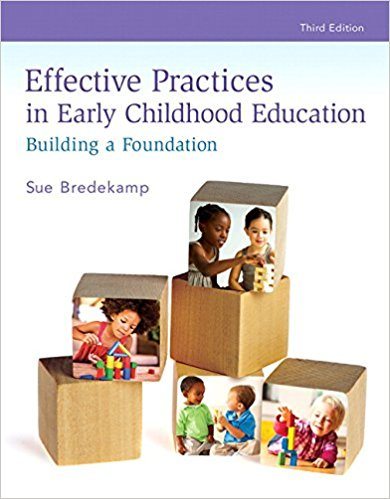
Leading expert on early childhood education Sue Breadcamp teams up with child psychologist Dr. Kate Cranley Gallagher in Effective Practices in Early Childhood . Now in its third edition, Breadcamp provides the readers with current information regarding policy change, Common Core, promoting play and more. In this edition content is also disseminated using a program called REVEL which is interactive, and aims to further engage today’s learners. Beradcamps’ expertise and lifelong love of learning and education bleeds through every chapter. Cranley Gallagher illuminates the pages with her strong background in child psychology. Expect to learn about how the early childhood years develop and change, create your own excellent approach to teaching, applying you learning to all types of minds, using language and diversity to strengthen your teaching, how to create coherent relationships with the parents of your students and of course how to implement this knowledge across the curriculum. We like to think of this book as an entire supplement to your degree in education and one that you will treasure throughout your career as a teacher.
5.) Anti-Bias Education in the Early Childhood Classroom: Hand in Hand, Step by Step edited by Katie Kissinger

This is an opportunity to do some serious searching deep within yourself. You know the searching we mean. We mean, checking in and asking “do I have biases and do I act on them?” That’s not an easy thing to detect in oneself, but when we’re honest with ourselves, we get there. If you’re ready to have that discussion, you’re ready for this book. We teach what we believe. If you’re looking for social justice to prevail in a major way, understand that you are an incredible influence who will shape the prospects of diverse children’s futures, then this is the book for you! This book touches on race, disability justice, justice regarding means, institutions, and what could be getting in the way of learning for people who experience any number of those very critical issues in education. Would you agree that part of education reform should include a hopeful and bright future for every single student whatever that looks like? Great! This book will give you tools to enact hope for you students. This important work is not magical, does not just take that “special someone” and Katie Kissinger understands that this is going to take modeling to demonstrate how to enact anti-bias education effectively. This is an essential addition to your education collection.
6.) The Giant Encyclopedia of Lesson Plans for Children 3 to 6 (GR-18345) edited by Kathy Charner, Maureen Murphy, & Charlie Clark
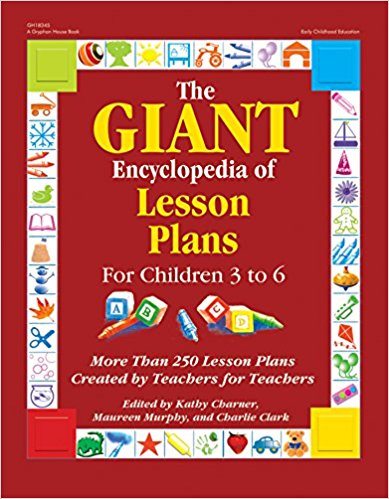
7.) The Complete Resource Book for Preschoolers: Over 2000 Activities and Ideas (Complete Resource Series) by Pam Schiller and Kay Hastings
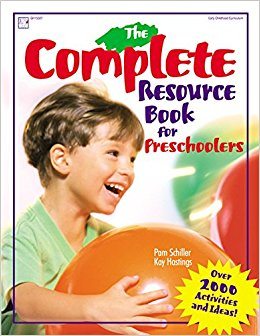
We love this resource for many reasons, but one of the biggest reasons is that this book is a time saver. Have you ever found yourself combing through website after website looking for the perfect activity to match your learners needs and looked up at the clock only to find yourself hashing out some of the old activities from years past? You’re not alone. All educators found themselves in this situation. The Complete Resource to the rescue! Though this is a large resource, it’s not as large as the world wide web. We don’t think you’ll run into the very real issue of choice fatigue with this resource. Nor will you come up short on ideas. This book tows the line perfectly. Within the pages you’ll find activities for seasons, fine motor, dramatic play, music, and more. Additionally the book divides activities into units, discusses various ways to set up activities and gives helpful tips for handwriting and other fundamentals to learning.
8.) Carson Dellosa Key Education Early Learning Language Library Learning Cards by Kasandra S. Flora and Sherrill B. Flora

Speech and Language Pathologists Kasandra S. Flora and Sherrill B. Flora have compiled a collection of stimuli for language development in the early childhood years. The purpose of these 160 language cards are to build and expand expressive and receptive language skills. All teachers can benefit from the materials and we particularly like the stimuli for exceptional learners-including, ESL, autism, and others. Individuals without expressive language will benefit from the clear pictures and category break downs. Each card is like a mini lesson and webs together functional language skills seamlessly. Additionally, these cards are great tools for parents who want to work on building vocabulary, create opportunities for open-ended questions and encourage fun learning in the home. Teachers, special educator, and parents can all benefit from the contents of this Language Library for early learners.
9.) Supervision in Early Childhood Education: A Developmental Perspective 3rd Edition by Joseph J. Caruso & M. Temple Fawcett
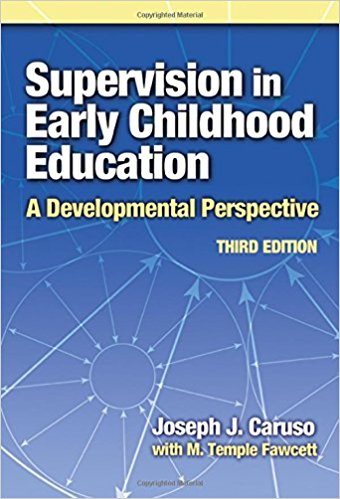
Supervision in Early Childhood Education is the text book for individuals looking to step into a leadership role in early childhood education. The first part of the book lays out the context for supervision. Each chapter progresses in a natural way starting with a clarified definition of early childhood education supervision, followed by practical implications, and an outline of various responsibilities. In the second part of this book you will learn about your own personal evolution as a supervisor. As no two supervisors are alike, throughout this section you will learn how to hone and nurture your skills. Additionally, learn a variety of methodologies of supervision required across different school settings. This final part of this book discusses staff recruitment and the career development of that staff.
10.) Developmentally Appropriate Practice in Early Childhood Programs Serving Children from Birth Through Age 8 3rd Edition edited by Carol Copple and Sue Bredekamp

Developmentally Appropriate Practice in Early Childhood Programs is a common textbook used for education bachelor’s degrees and early childhood education master’s degree programs. This book is approved by the National Association for the Education of Young Children (NAEYC). This resource guide focuses on evidence-based research to help you create developmentally appropriate material for your young learners. The age range is birth to 8 which is broken down year by year including insights on what to expect from each. This is a stable for students of higher education and into their careers as early educators.
11.) Early Childhood Education Today (13th Edition) by George S. Morrison

In the 13th edition of Early Childhood Education Today you will learn how to integrate contemporary critical components into your 21st century ECE classroom. As an early childhood educator, you are going to be confronted with a number of new challenges. This edition addresses literacy in the classroom, the achievement gap, diversity, teaching to exceptional learners, mental health, developmentally appropriate lesson planning, and how to use technology as a support for education. This book includes convenient access to ancillary digital material accessible on CD, tablet, and computer. This book is often used as a text book and is relevant for both beginning educators and seasoned educators alike.
12.) Introduction to Early Childhood Education: Preschool Through Primary Grades (6th Edition) by Jo Ann Brewer
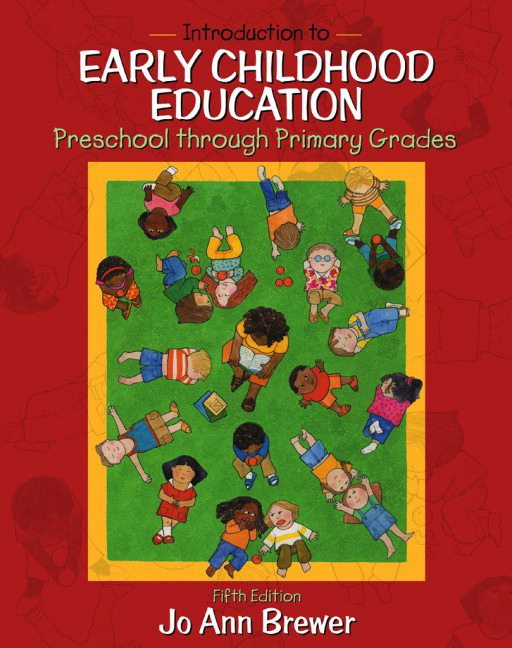
This down-to-earth textbook by Jo Ann Brewer is a clear and comprehensive glance into the evolving realm of early childhood education. This is a must-have resource particularly with attention to the substantial material centered on language and literacy development. Expect to learn about a range of different teaching styles, classroom set up, and methodologies for reaching diverse learners. Brewer focuses on developmentally appropriate programming which leaving no child out. This resource is great for special educators as well. Commonly used as a text book, expect to find yourself entering into your career as an educator with a stronghold on the foundations of early childhood education. This is a resource you will want to return to again and again.
13.) How To Get Kids To Say Yes!: Using the Secret Four Color Languages to Get Kids to Listen by

Ella, Liz, and Keith Schrieter team up as a family and talk to you like you are one of theirs. This book comes from a parent-perspective and is perfect for parents, grandparents, and children! We also encourage teachers to take a look- if you are finding some students over others more difficult to communicate with, this may be the resource that helps all of that click into place. The “Four Color Languages” are what Schrieter argues are the various world-views of children and many children fit into one ore more of these color languages. Understanding the world-view of your child or student frames how you will communicate with her/him. This book walks you through each of the four personality types, and how to interact with them-leading you to better communication and a communal approach to parenting and learning. Along with the practical advice, this book contains real life examples, addresses Dads, and ways to engage your child in this process. It’s a collaborative approach to communication that honors the child’s personality leading to better outcomes, and ultimately happy, kind, and charitable children.
14.) Who Am I in the Lives of Children? An Introduction to Early Childhood Education (10th Edition) by Stephanie Feeney and Eva Moravick
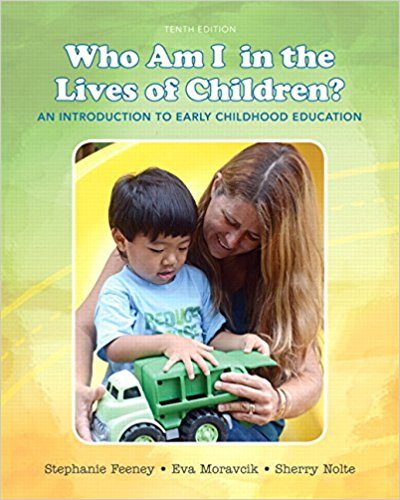
In Who Am I in the Lives of Children authors Stephanie Feeney and Eva Moravick challenge the reader to think about who they are and will become as educators to young children. A serious topic turned into a text book that is a must-have for any individual seeking to enter into the field of early childhood education. This is a highly visual and interactive book that demonstrates through modeling, and countless real life examples. You will learn how to create developmentally appropriate lesson plans that focus on social and emotional intelligence, as well as physical and intellectual intelligence for children ages birth to grade 3.
15.) The Early Years Matter: Education, Care, and the Well-Being of Children, Birth to 8 by Marilou Hyson and Heather Biggar Tomlinson
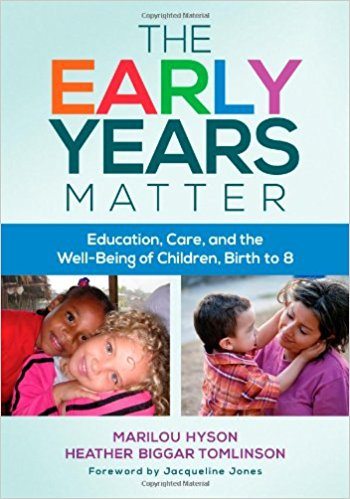
In The Early Years Matter Marilou Hyson and Heather Biggar Tomlinson include children of all abilities and backgrounds for their book. Hyson and Tomlinson start in the home with early care and learning for families. They move through the growth and development of babies and toddlers and examine ways to form relationships in the home and in the classroom without forgetting advocacy towards improved infant and toddler services. The book progresses through ages in school starting with preschool and expresses various options and ways to select the best program. The kindergarten through 3 year section continues to examine child development and how to create an educational experience that is truly positive for these young learners. We truly appreciate the attention Hyson and Tomlinson pay towards matters involved with low income families, children who experience trauma, children with disabilities, and children who have immigrated. When it comes to content, The Early Years Matter is thorough, and truly addresses contemporary issues found in today’s early childhood education classrooms.
16.) Beginning Essentials in Early Childhood Education 3rd Edition by Ann Gordon and Kathryn Williams Browne
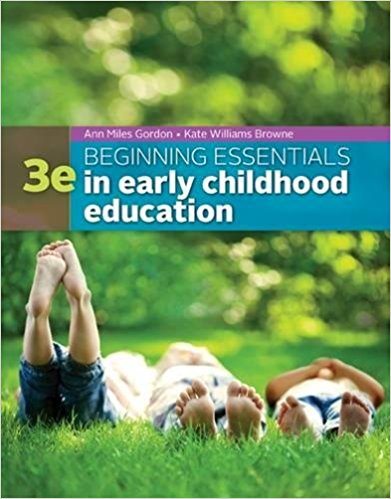
In the 3rd edition of Beginning Essentials in Early Childhood Education you will find new teacher vignettes, updates on “brain science”, and new ancillary teacher materials. This book aims to streamline the topic of early childhood education- making it a mini course that aims to cover quickly and clearly verses dive into minutia. In the first 50 pages you will learn about the history of early childhood education from inception to present as well as learn about the various types of programs. Section two looks at the “whole child” in terms of developmental stages, children with diverse abilities, special needs/ gifted and talented, and strategies for inclusion. This is just 20 pages in length, so is a sweeping overview. The next section discusses developmental learning and factors that influence development and growth. The remaining 100 pages focus on developing a career as a teacher. This brief overview of early childhood development is a great book for individuals who are either starting their education journey are a looking to assess whether or not this is the type of work they feel inclined to talk on. While limited in some respects by its brevity, it is still a highly informative text that wets the appetite for those who want to go deeper into the subject.
17.) Leading Anti-Bias Early Childhood Programs: A Guide for Change (Early Childhood Education) by Louise Derman-Sparks, Debbie LeeKeenan, & John Nimmo
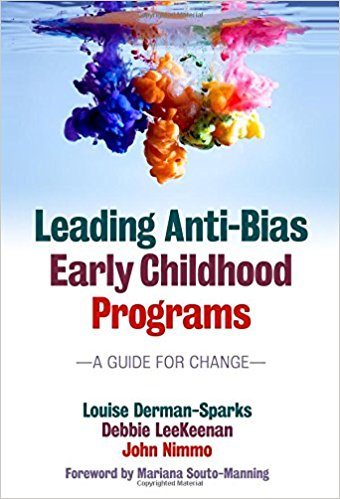
This book is a catalyst for change in the classroom. Louise Derman-Sparks, Debbie LeeKeenan, and John Nimmo challenge everyone- even the most resistant to change. This bold approach however, is necessary to really enact any form of change where biased educating is concerned. Be prepared to unpack your own thinking and potential biases and then quickly rebuild. The contents of this book lay a foundation and give practical skills so that you and those around you can benefit from your leadership in anti-bias education. This a must-have for all educators in today’s climate and certainly for those taking leadership roles in the field. Realistically, the authors state, anti-bias education takes initiative both from the teacher and the organization. Learn to create successful programming withing your given framework, and build a program from the foundation up. In fact Leading Anti-Bias Childhood Programs does not stop in the classroom and rather continues through to a call for activism in the field! If you are ready to challenge your mentality as a teacher, change the conversations in your classroom, and change the climate inside and outside of the schoolhouse, snatch up this book immediately.
18.) Early Childhood Education: Learning Together by Virginia Casper and Rachel Theilheimer
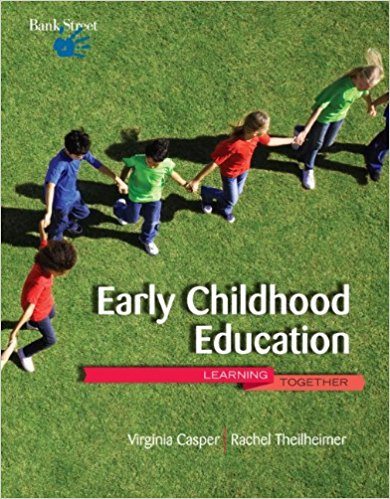
Developmental psychologist, educator and author Virginia Casper teams up with educator, and program director Rachel Theilheimer to bring you Early Childhood Education: Learning Together . This is a comprehensive overview of early childhood education and is a good textbook for beginning students. Priced low for a textbook, this piece is accessible to young students entering the field or even those considering applying to school. The content is easy to follow and will give you a quick and sweeping overview of a variety of new challenges that individuals face in early childhood education and encourages the reader to make their pedagogy adaptable to myriad of classroom scenarios.
19.) Tools of the Mind: The Vygotskian Approach to Early Childhood Education (2nd Edition) by elena Bodrova and Deorah J. Leong
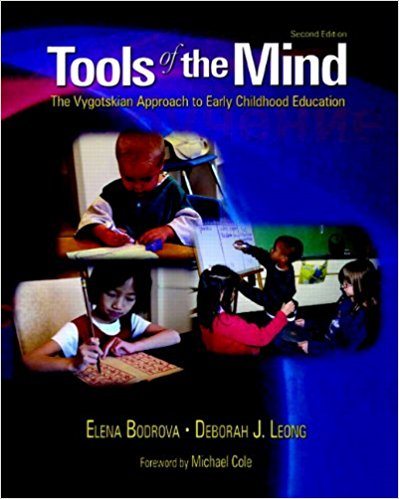
This is a unique opportunity to learn about the Vygotskian Approach in book form. This approach focuses a great deal on communal learning and how that affects executive function and how that helps students becomes agents of their own educations. Often times compared side-by-side with Piaget and how their philosophies on private speech differ, Vygotskian argues that private speech is an essential component that assists children to plan activities and strategies for their development throughout the early development of their life and even into adulthood. It is argued that the Tools of the Mind are in fact the “scaffolding” required to build self-guided learners. These tools aid in other functions as part of development including a child’s self control. This is a great resource for any individual looking to broaden their approach to teaching and delve into a different perspective on child development.
20.) Fundamentals of Early Childhood Education (8th Edition) by George S. Morrison

George S. Morrison, educator and professor along with contributing writers Elizabeth Beavers, Donna Kirkwood, and Mary Jean Woika bring to you this comprehensive yet light overview of early childhood fundamentals. It’s difficult to imagine a textbook that can achieve both of these things at once, but this one does. These eight critical themes are central to this piece: the value of developmentally appropriate practices (DAP), merging early childhood education and special education, closing achievement gaps between children of poverty and more advantaged peers, literacy development, integrating STEM, working with diverse learners, developing self-guided learners, and continual professional development. Thought out all of this you will also learn how to integrate education and DAP with parents. This is a fantastic resource for new students, first year teachers, and veteran teachers alike.
21.) Early Intervention Games: Fun, Joyful Ways to Develop Social and Motor Skills in Children with Autism Spectrum or Sensory Processing Disorders by Barbara Sher
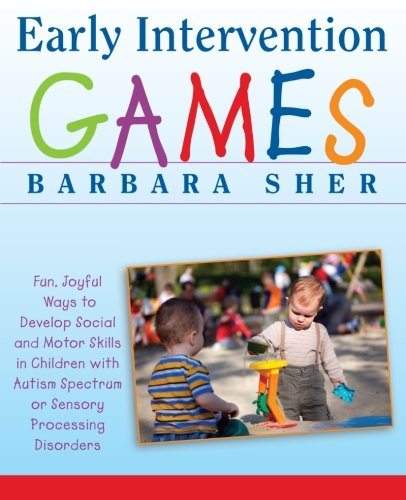
Early Intervention Games is written by Barbara Sher, an occupational therapist who has an understanding of the sensory needs of autistic individuals and individuals with a variety of sensory processing exceptionalities. Sher has organized a treasure trove of engaging games to helps young learning with motor planning both find and gross. Most all of the activities are geared towards groups large and small. Some activities may be modified to work for one child. Many of the activities require just a few easy-to-access materials. Displaying a clear understanding of the sensory processing differences of these exceptional minds, Sher also includes and entire section on water games are absolutely relevant to groups and once again may be easily modified to work for one child. We love this collection of games that help a variety of autistic and SPD learners. This is a great collection of games, and a perfect resource for special educators.
22.) Rethinking Early Childhood Education edited by Ann Pelo

We were so thrilled to find this gem of a book. As many people argue, bias permeates education at the earliest of years may reinforce prejudice and even reinforce stereotyping with out-of-date stimuli and educational practices. Rethinking is a breath of fresh air. Editor Ann Pelo approaches her collection with activism at the heart. Pelo understands the importance of honing a sense of self and justice in the early childhood years and encourages teachers to connect with students on ideas related to social justice, ecological awareness, and active curiosity. Within the pages are accounts from a wide range of teachers and parents discussing social justice teaching in the field. If you as a parent or teacher are looking for inspiration on ways to educate your little one or classroom on the values of social justice for today’s world, snatch this book up immediately!
23.) Diversity in Early Care and Education: Honoring Differences by Janet Gonzalez-Mena
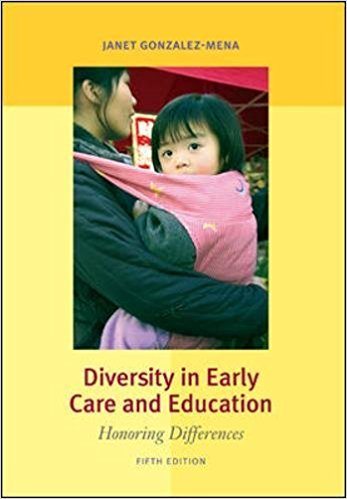
Highly regarded early childhood education expert and life long learner Janet Gonzalez-Mena brings us Diversity in early Care and Education . Gonzalez-Mena’s career went through the entire gambit: from interested volunteer to involved parents, to teacher aid, to leader in the field. Gonzalez-Mena has seen early childhood education from every angle and has honed her understanding of what young children need in their early years. In Honoring the Differences Gonzalez-Mena examines the importance of a broadened view of each child in their classroom. She encourages teachers to understand each individual’s culture when approaching classroom teaching. There is no guess work involved here- as the author explains various ways of listening to, unpacking and embracing diverse cultures in a manner that leads to effective education. This is a phenomenal resource for parents, care givers, and early childhood educators.
24.) Inclusion in the Early Childhood Classroom: What Makes a Difference? by Susan L. Recchia and Yoon-Joo Lee

You understand the importance of assessment to truly implement quality education for your students. What about assessing assets of the individuals? In Inclusion in the Early Childhood Classroom Susan L. Recchia and Yoon-Joo Lee discuss the joys of differences in the field of education. Rather than looking at disability as a “here’s what s/he can’t do” Recchia and Yoon-Joo embrace all of the “cans dos” evident in a diverse classroom. You will learn to facilitate social interaction in an inclusion classroom, embrace children with diverse abilities with positive responding, bridge the gap for those with “developmental differences”, and learn about the required “six teacher competencies” that make a fully inclusion classroom work. All of this is taught through research, through classroom example, and thorough examination. If you are working in an inclusion setting or are hoping to maximize the education for all types of learners in your classroom, this is an excellent resource.
25.) Twelve Best Practices for Early Childhood Education: Integrating Reggio and Other Inspired Approaches by Ann Lewin-Benham

Ann Lewin-Benham is a prolific writer and educator who bring to the world this exciting resource applicable to educators and parents alike.Lewin-Benham closely examines Reggio Emilia in its cultural context and how it uniquely benefits the early learners with flow- a deep concentration for lengthy hours of the day. Does that sound impossible for early learners? Lemin-Benham explains that indeed it is not, in fact it is the result of taught self-regulation. You the reader are gently guided through every step of this through the content of the book . Other materials covered include the environment as the curriculum, human development and particularly with relations to brain development, language and imagination. The books culminates with an in-depth description of EXCEL- thankfully not how to use a spreadsheet but rather how to foster learning in the “environment” though “eXchange” “Conversation” “Evidence” and “Language.” This is a first-class resource to return to again and again. You will want to keep this piece at arms reach!
26.) The Great Disconnect in Early Childhood Education: What We Know vs. What We Do by Michael Gramling

Michael Gramling examines the impact of policy on practice in early childhood education. The front half of the book examines political propaganda used to treat symptoms rather than the cause and takes a close peak at the promises made through initiatives like the “Head Start” program- why it came into being and why it was used to solve the problem of poverty. This propaganda trickled down to include how educators should approach assessment and pedagogy in the early childhood classroom. Gramling argues quite strongly that the policy created a disconnect between best practice teaching and teaching that happens- quite passively. The latter half of the book details a solution. If you are an early childhood educator who is looking to move away from public policy education into best practice education, or even if you do but want to do it even better, snatch up this book. Additionally, as so much of early childhood education runs in tandem with parent involvement and administrative backing, administrators and parents would highly benefit from the contents of this piece.
27.) Multicultural Teaching in the Early Childhood Classroom: Approaches, Strategies and Tools, Preschool-2nd Grade (Early Childhood Education) by Mariana Souto-Manning
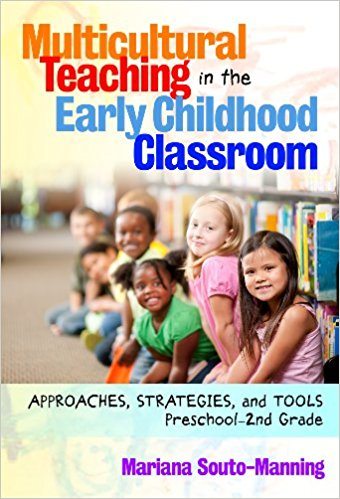
Multicultural Teaching in the Early Childhood Classroom is a guide for teachers who are faced with the many and varied learning styles of children from diverse cultural backgrounds. This book walks you through approaches and teaching tools even defining “multicultural education” and how to implement it. You will learn how to critically engage with the meaning of teacher and student culture, how to encourage active questioning and inquiry in young learners while taking into consideration every possible barrier. Mariano Souto-Manning discusses how to use storytelling and acting as an exchange of cultural experience and also includes methods for including technology in your early childhood classroom. This is must-have resource for 21st century early childhood educators.
28.) Using Observation in Early Childhood Education by Marian C. Marion

Author Marian C. Marion is a well-known author of textbooks for early childhood education. In Using Observation in Early Childhood Education Marion describes in detail the value of observation in the early childhood classroom. She argues that in order to assess and teach you much watch. Getting to know your early student is as much about observations is it is implementing a curriculum. You will learn how observation guides your decisions when determining programming, how observing child behavior in the environment informs those decision and how to connect with your students in a way that is relevant and meaningful. Naturally a major part of observation is assessing your learner- their cause and effect within the environment. In those moments, argues Marion, you can evaluate for your students strengths and weaknesses-identifying any issues and of course resolving them.
29.) NurtureShock: New Thinking About Children by Po Bronson and Ashely Merryman
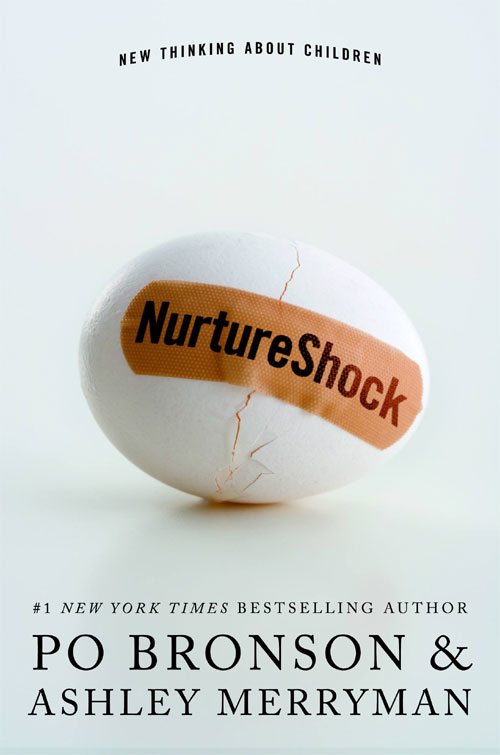
Brace for impact as Po Bronson and Ashley Merryman not only bust myths on early childhood but downright shatter a number of conceptions we have heard again and again. “Praise your child for being smart.” A ‘no-brainer” right? Not according to the findings of Carol Dweck and her team at Stanford. Those with a high self esteem are going to make it in this tough world. Except findings show that self-esteem has been measured in a way that is not useful and often times self-esteem is really full of oneself. “Highly aggressive violent people happen to think very highly of themselves.” These are the methods by which parents and educators nurture a culture of success to help students navigate their path to success. Bronson and Merryman say that much of this nurture is backfiring and causing a plethora of resistant teenagers and young adults to settle for whatever comes easy and natural. Additionally, this book touches on the importance of sleep, why children lie, issues with self-control, the effects of television-especially educationally-centered tv on aggressive behavior, and more. If you are ready for a challenge, pick up NurtureShock immediately.
30.) How Children Succeed: Grit, Curiosity, and the Hidden Power of Character by Paul Tough
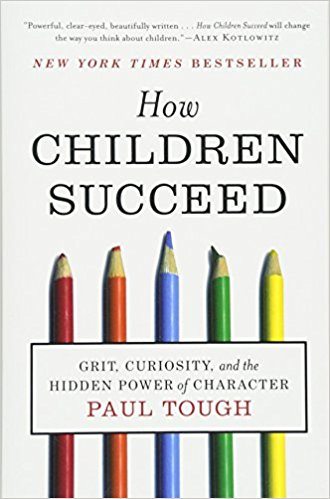
Through How Children Succeed Paul Tough outlines the importance of character on the success of children. Now backed in science, the importance of grit, and curiosity come to the fore as elements to seriously consider when educating young learners. Tough discusses how these elements improve the lives of children who grow up in any circumstance with particular attention to children growing up in poverty. This challenging read is a great choice for any educator or parent who is interested in changing the outcomes for children who may not be given as many opportunities. We highly recommend this book for all educators and believe that educators in urban settings will particularly benefit from the contents of its pages.
31.) Einstein Never Used Flashcards: How Our Children Really Learn- and Why They Need to Play More and Memorize Less by Kathy Hirsch-Pasek, Roberta Michnick Golinkoff, and Diane Eyer

Einstein Never Used Flashcards is a collection of activities that brings the reader be that a parent or a teacher back to common wisdom. What these three child psychologists do in the text is revive what we already know- children learn through play. Though after a number of years in high education, buried under books that force educators to practically teach to the test, it becomes unclear how to teach using play in the contemporary classroom. That’s another reason we love this book- the author’s take the guesswork out of teaching through play and provide you with 40 games to help you get your own creative juices flowing. Not only will you walk away with a treasure trove of fun for your students, you’ll also find yourself having fun piecing together and implementing these engaging, rewarding, activities that are developmentally appropriate for your learners.
32.) The Scientist in the Crib: What Early Learning Tells us About the Mind by Alison Gopnik, Andrew N. Meltzoff, & Patricia K. Kuhl

Based in the field of cognitive science, Alison Gopnik, Andrew N. Meltzoff, and Patricia K. Kuhl examine the minds of the babies. This illuminating book though published in 1999 is still relevant today. The Scientist in the Crib explains cognitive science- often described as the merging of linguistics, machine learning, neuroscience, and psychology- giving us unique insight into the world of infants. This book is filled with great analogies, humor, fun insights and is presented in a way that is perfect for the student completing a course, teacher in early childhood education, and new parent. You will learn how children develop language, interpret meaning, take in information through their eyes, and decode the sounds we would describe as “babble”. The presentation of the material is as good as the material utilizing star trek analogies, ancient wisdom and literature and so much more. If you have ever wondered what is happening in the mind of an infant, this book is a must-have.
33.) Power of Play: How Spontaneous, Imaginative Activities Lead to Happier, Healthier Children by David Elkind
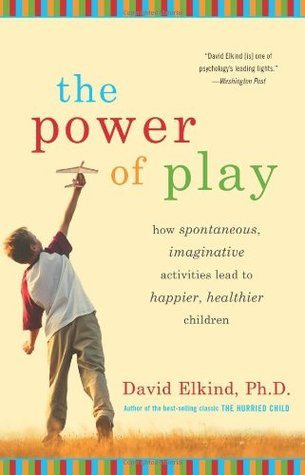
Child psychologist David Elkind begs the reader to actively question the absence of play in the daily lives of not just our children but of ourselves.
The Power of Play
examines the value of unstructured time alongside the value of structured, planned orderly events. I am recalling the days when I taught summer camp for the first time. There was a moment during the second or third day of camp that my co-teacher and I recognized as being “amazing.” The unstructured snack times, breaks, and lunch where the children had maximum freedom and minimal structure appeared to be where the real connecting took place. For myself and my co-teacher the piece we noticed first was the social interactions. We lead a camp for autistic children and to see that evolve without prompting or intervention was eye-opening. Elkind includes the role play has in becoming social. He also does not throw the baby out with the bathwater- examining how play can be used in school units like math, science, and reading. Additionally, Elkind examines play and development. Even if you don’t feel you have time for “spontaneity” in your day as an educator, we still think this would make a great resource of parents and teacher alike.
34.) Bringing Reggio Emilia Home: Innovative Approach to Early Childhood Education (Early Childhood Education Series) by Louise Boyd Cadwell
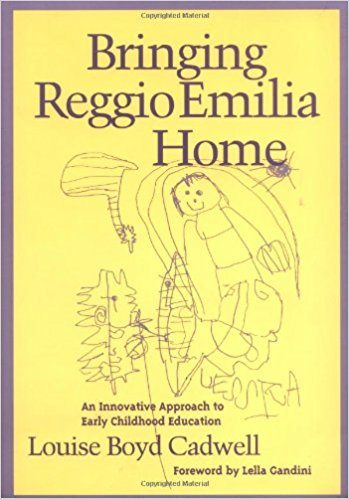
This book is a documentary account of a young intern who worked in the Reggio system in Italy and how she brought this pedagogy home to her school in St. Louis, Missouri. Louise Boyd Caldwell documented-with the help of her colleagues- her experiences in both Italy and the United States . Additionally Caldwell clearly outlines the Reggio Emilia approach through the following headings: “the child as a protagonist,” “the child as collaborator” “the child as communicator” “the environment as the third teacher” “the teacher as partner nurturer and guide” “The teacher as researcher” “documentation as communication” and the “parent as partner” For an in-depth and personal account of how Reggio Emilia emerged in St. Louis and for methodology for how you too may begin to adopt the practice, this is a great option.
35.) Brain Rules for Baby (Updated and Expanded): How to Raise a Smart and Happy Baby Child from Zero to Five by John Medina
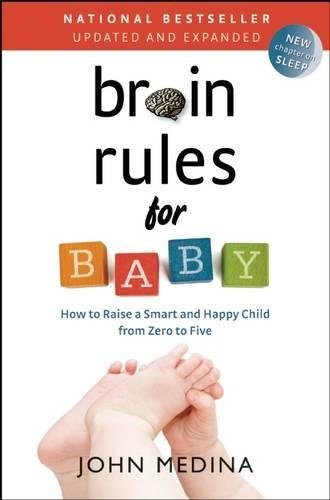
John Medina takes us on a journey inside the minds of a babies from birth to age five. Medina starts with the roles of parents and the developing mind of the baby. The audience of this book is the parents themselves. As is stated in his introduction, Medina has taken the cues from his parents in seminar and tailored this book to answer every parents’ burning questions. Though Media does touch on behavioral psychology, and cellular and molecular biology. His “brain rules” come from peer-reviewed worked that have been studied and replicated. Once they have met his scientific criteria for “best practice” into the rule book they go. We truly appreciate the marriage of science and common concerns from his audience. Some examples of his brain rules include: “babies remember” “teach self-control” “hurray for play!” and “talk to your baby- a lot!” This practical book will be one you reach for again and again throughout your babies early years. If you’re looking for a concrete yet individualized book to help you navigate and becomes fully aware of your baby’s development and your role in it, this is a must-have.
36.) Mind in the Making: The Seven Essential Life Skills Every Child Needs by Ellen Galinsky
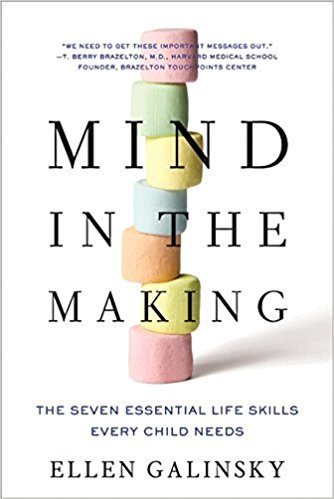
Author, educator, and founder Ellen Galinsky brings to us her fourth book on education- Mind in the Making . Based in the latest research on child development, Ellen Galinsky draws the reader’s attention to valuable advice for parenting, but it’s not about toilet training, breastfeeding, and school readiness. Her advice focuses on preparing the child to take on the challenges of the world and build a repertoire of what are considered to be “essential life skills.” Galinsky examines 7 critical areas: focus and self control, perspective taking, communicating, making connections, critical thinking, taking on challenges, and self-directed, engaged learning. All of the advice within the pages comes with concrete tasks; so parents are not left guess how to nurture each essential skill. This is a fantastic resource for parents who are ready for a fresh approach to parenting young children. Additionally, we like this resource for teachers as successful early childhood development programs work in tandem with educator and parent.
37.) Beyond Quality in Early Childhood Education and Care: Languages of evaluation (Routledge Education Classic Edition) by Gunilla Dahlberg, Peter Moss, and Alan Pence

How do you evaluate for quality in an early childhood program? Gunilla Dahlberg, Peter Moss, and Alan Pence have written the text book on ethics and how to truly make an attempt at understanding quality in early childhood education programs. The authors begin with theory in a cultural context as a foundation. Building upon that Dahlberg, Moss, and Pence show you how to construct learning in early childhood while examining the purpose of the institution. The pedagogy examined here includes Reggio Emilia and an examination of the Stockholm effect. In addition to this, the authors examine how to make a path for progress for students in the minority. This is a comprehensive examination of quality and ethics for early childhood learners and is must-have for educators working in the field of early childhood education and for practitioners focused on early childhood development.
38.) A Child’s Work: The Importance of Fantasy Play by Vivian Gussin Paley

Vivian Gussin Paley, on the shoulders of Rena Wilson, reminds us of how crucial play is to the development and learning of young children. Paley’s method of delivery is what makes this book so unique- she becomes a storyteller and each chapter is a new delightful tale of one child and how they play and of course learn. She paints a clear visualization that we as readers can observe and learn from. This is not your typical “guide book.” You won’t find the usual step-by-step instructions that are to be followed in order. You won’t find the jargon of a scientist. Rather, this book is written by a teacher who has made early childhood education her work for over 4 decades. If you are an educator, and you value play this is a good book. If you are an educator and you value play for you learners and for yourself- this book may become your best friend.
39.) Courageous Leadership in Early Childhood Education: Taking a Stand for Social Justice by Susi Long & Mariana Souto-Manning
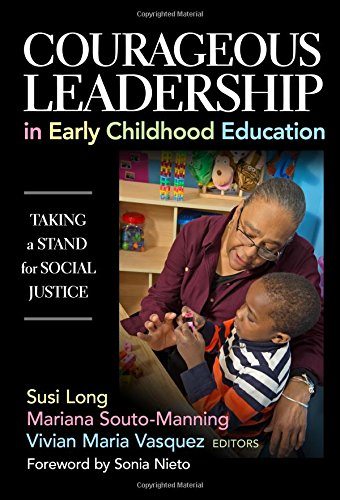
Actually, this book has 13 authors who take a courageous stand for social justice. This is collection of work from teachers to teachers that serves to encourage you to speak out and step out and be a voice for students in need in the early childhood years. Arguably, these are the most important years for children to learn how to be just in social scenarios. The authors of this book recognize this and have assembled a phenomenal group of essays to show you how to utilize these tools in your early childhood classroom. You will learn how to advocate for your young students, work with bilingual students, be “culturally relevant” leaders, collaborate with your students, involve family and the greater community, respond, understand risk-taking in rural elementary schools, setting up your classroom and more. We love this book for the wide-range of diversity expressed in its pages which perfectly echos the who purpose of this book- standing up for all types of learners regardless of race, culture, and societal context.
Introduction to Curriculum for Early Childhood Education
(16 reviews)
Jennifer Paris, College of the Canyons
Kristin Beeve, College of the Canyons
Clint Springer, College of the Canyons
Copyright Year: 2018
Last Update: 2019
Publisher: College of the Canyons
Language: English
Formats Available
Conditions of use.
Learn more about reviews.
Reviewed by Felix Rodriguez Suero, Lecturer I, University of Texas Rio Grande Valley on 11/9/22
This book addresses a wide range of topics pertaining to curriculum design and inquiry with young children. Learning through Play is a central focus of the book. However, the authors introduce the reader to the most common approaches to early... read more
Comprehensiveness rating: 5 see less
This book addresses a wide range of topics pertaining to curriculum design and inquiry with young children. Learning through Play is a central focus of the book. However, the authors introduce the reader to the most common approaches to early childhood education.
Content Accuracy rating: 5
I think that at times the authors rely too much on secondary documents instead of citing scientific research findings directly. However, the authors draw from relevant theories and anecdotes to illustrate what the application of specific pedagogical principles may look like in practice, which I found particularly valuable for education students at the undergraduate level in general.
Relevance/Longevity rating: 5
One of the important contributions of this book is summarizing in one place, theories, principles, and concepts that often demand the use multiple books and articles. This book gives future teachers a good grasp of essential concepts such as transitions, routines, student readiness, assessment, and documentation. In addition to the solid discussion of the traditional literature, future editions could benefit from discussions on the contributions of neuroscience to how we understand young children's learning.
Clarity rating: 5
The authors use a language that is clear and accessible. Some of the articles I assign in my Art Education method courses can be hard to read for some of my undergraduate students. I am considering substituting some of those articles with chapters and sections from this book.
Consistency rating: 4
The organization of the book is consistent throughout the different chapters. The pop-up windows "Vignette" and "Pause and Reflect" add content and experiences that facilitate the connection between theory and practice.
Modularity rating: 5
In my case, not all chapters are useful for the courses I currently teach, but the book structure makes it conducive to assign specific chapters that align with some of my weekly topics.
Organization/Structure/Flow rating: 5
The book is organized into five large thematic sections. Each section is divided into uneven number of chapters. However, the organization of the text is consistent throughout the different chapters. The book starts with more general theoretical and practical considerations that could be useful to students from different disciplines. Section IV, covering Chapters 7-16 provides insights into specific subject areas.
Interface rating: 2
While the book is comprehensive and useful for introduction to curriculum design and education method courses, the interface of the book could benefit from more elaborate formatting and design. Several images are low resolution, and the format and quality are not consistent. In general, a more professional design could make the book more visually appealing.
Grammatical Errors rating: 5
I did not notice significant grammatical errors.
Cultural Relevance rating: 5
The authors are attentive to how cultural and social factors affect students’ engagement. They intentionally examine learning experiences from diverse cultural settings and discuss how disadvantage students may lack access to technology.
I was expecting more specialized and in-depth discussions on the Creative Arts in Chapter 11. Nonetheless, this book is a great resource to address general curriculum design considerations with young children. I plan to use this book in the future.
Reviewed by Ilfa Zhulamanova, Associate Professor, University of Southern Indiana on 5/19/22
This text brings a comprehensive approach to curriculum making in early childhood education. I really liked the emphasis on play-centered approach to education of young children. read more
This text brings a comprehensive approach to curriculum making in early childhood education. I really liked the emphasis on play-centered approach to education of young children.
The content information is researched-based, unbiased and accurate.
The text consists of best practices experienced and grounded in research for the education of young children. The text is written and/or arranged in such a way that necessary updates will be relatively easy and straightforward to implement.
The text is clearly written, full of examples and visual graphs, charts, tables, and photos. The language is appropriate for the context.
Consistency rating: 5
There is a consistency in organization, terminology and framework of the book which makes it easy to follow. Each chapter begins with objectives and brief introductions. I really like the Pause to Reflect sections included throughout the text.
The text content is divided into sixteen chapters which can be easily and readily divisible into smaller reading sections that can be assigned at different points within the course. Instructors will find this format easy to follow to organize their course.
The content topics are presented in a logical, clear fashion.
Interface rating: 5
The text is free of significant interface issues, including navigation problems, distortion of images/charts.
The book is readable with no grammatical errors.
Cultural Relevance rating: 4
The text book content and images represent diverse population of children and families schools serve today. More information on teaching children with special needs and ESL/ELL students would make this book more appealing to instructors.
Reviewed by Robert Bryant, Adjunct Professor, Dominican University on 4/25/22
The text is readable and complete in scope and Early Childhood responsibilities. read more
The text is readable and complete in scope and Early Childhood responsibilities.
The text shares accurate information that is correct and timely based on current research.
The text is relevant in today's education environment.
The book is readable and compete.
The book focuses on nurturing care and attachment as paths for early learning.
The book has a preface and a table of contents.
The book is organized as a readable book, but also by chapter subject for easy reference on many topics.
The PDF download makes it convenient to use as a reference anywhere.
The book is relevant when compared to current early learning research.
Reviewed by Kimberly McFall, Associate Professor, Marshall University on 1/3/22
The book is arranged in a logical order and includes relevant up-to-date topics. read more
The book is arranged in a logical order and includes relevant up-to-date topics.
The book reflects accurate information
This book includes relevant topics that are arranged in a logical way. One thing that might be helpful is to make sure that terms/topics that are intertwined (technology and culture for example) are also noted in a chapter summary or hyperlinked from the Chapter Objectives sections for easy access/talking points for users.
The book is well written, grounded in research, and easy to read.
The book is consistent with current research, accuracy in data/tables and laid out in a way that the friendly to the user.
Modularity rating: 4
The text features a clearly laid out chapter objective section and chapter headers. I think that it would be made even stronger if the objectives were aligned to the headers or hyperlinked to the sections they support.
This book is well laid out and is scaffolded nicely throughout.
Interface rating: 4
An opportunity for strengthening this book, even more, is to provide hyperlinks from the chapter objects to the sections of the book where each objective is addressed. Also, since the author does such a nice job of supporting the content with cultural and technology references, keywords that are hyperlinked from the table of contents to these topics that are not stand-alone chapters might help users if they want to use this book in part/section.
Professional and accurate without grammatical error
As noted above, easier access to clickable links or noted where to find culturally relevant content would strengthen this area.
This is well thought out book that gives an in-depth look at early childhood education in a practical approach. More information about culturally responsive teaching would make this book a home run. The authors have done an outstanding job providing useful, researched-based information. One glaring issue is the lack of glossary or index and clickable links from Table of Contents and Chapter Objects would be helpful.
Reviewed by Robin Folkerts, Assistant Teacher Educator, Wichita State University on 10/30/21
There is a table of contents which is very helpful and transparent about the contents. I found the information in this text to be very comprehensive and thorough in regards to an introduction to Early Childhood Education. There is no index or... read more
Comprehensiveness rating: 4 see less
There is a table of contents which is very helpful and transparent about the contents. I found the information in this text to be very comprehensive and thorough in regards to an introduction to Early Childhood Education. There is no index or glossary to accompany this text.
I have taught this course with another book, and I find that the information in this resource is accurate and up to date. I did not find errors in my review, and I did not find anything that was biased in my opinion.
The topics are relevant, and the vignettes that are added in each chapter are valuable for deeper understanding of real life experiences. It is helpful for Early Childhood Education teacher candidates to have practical and specific examples of how theories are applied. I found the topics covered in this book to be important and well-represented.
The flow of the text is easy to follow. It is helpful to have tables and charts to help clarify information in the text. The objectives at the beginning are also helpful to clarify what is contained in each chapter. I appreciated the multiple lists that were included in the tables. The readability was easy and engaging. I found the tables and charts in the fourth section to be helpful in understanding developmentally what skills students have at certain ages and stages. I particularly enjoyed the chapter on teaching science where it was divided into sub-categories of earth science, life science, and physical science.
I see consistency throughout the resource in regard to text structure and text features. Each chapter begins with the objectives, and is laid out in an easy to read format with headings, tables, and vignettes (in green boxes) and research highlights (in purple boxes). The consistency made it easier to read and follow.
I found this text to be well-organized with text features used to keep information in manageable chunks. Illustrations and tables are used to help clarify information and it flows well for the reader. I especially like the vignettes that were consistently in green boxes. They are well-written and relevant.
I found this resource to be well-organized and easy to follow. It is divided into sections and chapters where the first three sections are more of an introduction, and the fourth section is the real meat and potatoes of curriculum and lesson planning. The final section gives an extension for other age groups.
The interface was exceptional. I downloaded it as a PDF and it was easy to navigate. I had no issues at all with any of the displays or features, and it would not be confusing or distracting to readers. This resource is easy to navigate and consistent in its format.
I did not identify any grammatical errors in my review of this resource. A link was included at the beginning to report any such findings.
While I did not see anything blatant, in comparison to the book that I currently use, there is not an entire chapter dedicated to cultural sensitivity. Rather, it is intertwined within the chapters. There was a piece in an early chapter that talked about including books and materials that are culturally diverse, There was a reference in the Infants and Toddlers chapter about cultural sensitivity as well as working together with families. English Language Learners is also not included as a chapter on its own, but is interwoven into the contents of this resource.
I enjoyed this resource very much, and I will plan to use it with my ECU: Foundations course that I teach. Well Done!
Reviewed by Jennifer Forker, Professor, Hutchinson Community College on 10/18/21
This textbook covers all of the major topics for developing a curriculum in a preschool setting. read more
This textbook covers all of the major topics for developing a curriculum in a preschool setting.
The book breaks down each developmental level expectations in a way that is easy to read and understand.
Relevance/Longevity rating: 4
The textbook focuses on the California Early Learning Standards, but can easily be adapted to your state framework.
The textbook uses phrases that should be common knowledge to all early childhood education professionals.
The chapters are laid out similarly so the student always knows what to expect.
Each subtopic is in its own chapter and can be easily skipped (or added to) if needed.
The book flowed easily from basic theorist knowledge to more in depth procedures on how to incorporate curriculum into your classroom.
The links provided in the footnotes are live and easy to access.
I did not see any grammatical errors.
The photos used were inclusive and representative.
The vignettes provided real life examples of best practices in early childhood education.
Reviewed by Diane Lewis, Adjunct Professor, Northern Essex Community College on 4/6/21
I really like how the book is broken down into sections and works from the understanding how children learn to developing curriculum. I like seeing how to set stage for learning and guiding behavior in classroom. I like how the book wraps up the... read more
I really like how the book is broken down into sections and works from the understanding how children learn to developing curriculum. I like seeing how to set stage for learning and guiding behavior in classroom. I like how the book wraps up the last 9 chapters with what the curriculum looks like. Concluding with documentation and assessment is a great way to end the students learning. This book will be very helpful in many classes in ECE.
As I was reading I found the information to be accurate and error-free. The author is unbiased.
It will be pretty easy to update what would need to be updated as years go by.
I really liked the clarity and the examples in the chapters. Not much jargon/technical terminology to confuse the reader. Easy to read.
I liked how the book started in the understanding and ended with examples. The text was consistent in how it was written.
Different chapters can be spaced out over the course and also through other courses as well. It can easily be broken down into different sections for easier digestion of the reading. Lots of charts and pictures break up the blocks of text.
Definitely written in a logical and clear fashion. It shows someone how to educate young children.
Although there are images and charts, it is easy to navigate around them or through them. There seems to be a nice lead into the charts or images that makes it so that they are not distracting or confusing to the reader.
I did not find the text to be culturally insensitive or offensive in any way.
I would use this book in a couple of my classes. It has information that I cover in in 3 different classes.
Reviewed by Mary Ellen McGuire-Schwartz, Professor, Rhode Island College on 12/9/20
The text is comprehensive in covering areas of early childhood curriculum. I like the straightforward nature of chapter content with photos, charts, webs, links and other resources. I like the links that are available in each chapter. Some of the... read more
The text is comprehensive in covering areas of early childhood curriculum. I like the straightforward nature of chapter content with photos, charts, webs, links and other resources. I like the links that are available in each chapter. Some of the links are related to California State Standards and California Child Care Licensing Regulations. It would be good to have links from other states. I would also like more in the text on kindergarten - grade 2 curriculum, cultural competence, equity, Universal Design for Learning, and inclusion .
Content Accuracy rating: 4
The content appears to be very accurate with references and links provided in each chapter. I was not able to check all sources and documentation.
The content is very relevant and straightforward with links that can be updated.
I found the text very clear and to the point.
The text is internally consistent with terminology and framework. My only concern relates to limits of California regulations and standards. Is it possible to add regulations and standards of other states to the text?
There is good organization in text. The text is broken down into small organized sections with headings, subheadings, charts, and webs.
Organization/Structure/Flow rating: 4
The topics in the text are in general presented in a logical, clear fashion. I would like to see infant-toddler and kindergarten - second grade curriculum connected with the preschool curriculum in a logical order. More focus on both infant-toddler, Birth - 3, and kindergarten through primary curriculum, age 5-8, would add to the flow of the book. Chapters 15 and 16 cover the areas of infants and toddlers and school age curriculum at the end of the book.
The text is very clear and direct. I found no distortions of images or charts. I liked the displays of charts and webs in the book. The appendices were particularly clear and helpful.
Grammatical Errors rating: 4
I found the text grammatically correct but I did not review it with a fine tooth comb.
Cultural Relevance rating: 3
A greater focus on social justice, equity, and cultural competence throughout the book would add to its cultural relevance. More culturally diverse images would also add to the text.
In general, I like the book. It is comprehensive. I would like to see a greater focus on cultural competence, social justice, and equity.
Reviewed by Yolanda Buenafe, Early Childhood Education Faculty and Program Coordinator, Mt. Hood Community College on 8/17/20
The textbook is quite comprehensive as an overall introduction to early childhood curriculum. Content covers theories, curriculum models, developmental span from infancy to school age, and specific curriculum areas. The textbook provides a good... read more
The textbook is quite comprehensive as an overall introduction to early childhood curriculum. Content covers theories, curriculum models, developmental span from infancy to school age, and specific curriculum areas. The textbook provides a good foundation for many of our other early childhood courses, where we delve into specific topics and issues. Expansion in a few areas could be further incorporated, as indicated in other criteria sections of this review. There is an appendix section which provides useful supplemental resources. Incorporating an index and glossary would be helpful to have for future revisions of this textbook.
The content is accurate and free of bias, citing theories, research, and child development milestones and principles.
Information presented is relevant to curriculum approaches and content areas which students will need to be knowledgeable of, when considering how to apply and integrate these into their developing teaching practices. Expanding on the topics of DAP, anti-bias curriculum, and intentional teaching would increase the textbook's relevance to current and future competencies for early childhood practitioners.
The text is written in a clear manner, utilizing terminology that is pertinent and essential to those in the early childhood field. The theoretical aspects were described in a straightforward and understandable way, and further enhanced with diagrams, tables, and other visuals.
The textbook is consistent with its format of outlining objectives, followed by a concise and clear introduction of the chapter/topic, and providing vignettes and reflection questions in each chapter to connect theory with practical application. Terminology is consistent throughout the text.
The chapters cover the content areas well without being overly lengthy and include essential and relevant subtopics. In the chapters that address the various subject/curriculum areas, developmental milestones and skills for preschool ages four to five are nicely outlined in tables. For a more integrated approach emphasizing the continuum from the infant stage to school age, I would suggest that the tables include skills/milestones from infancy to school age in each of these curriculum areas, which would require revision or renaming of the ‘preschool’ planning section to include a broader scope. An additional recommendation would be to place the chapter on infant and toddler curriculum before the section/chapters on preschool curriculum. This would emphasize the adult-child interactions as central to infant and toddler curriculum, and then proceed to the more specific curriculum content chapters, providing information on how math, science, literacy, social science concepts can be identified and supported in everyday routines and explorations with infants and toddlers.
Overall the topics in each chapter are organized in a clear and systematic manner with guiding principles presented at the beginning of the chapters, followed by vignettes that bring these concepts 'to life.' The chapters end with reflection questions, providing the reader/student with a personal connection to the chapter content. Adding a more defined chapter on anti-bias curriculum in section 1 would highlight the importance of our awareness of incorporating anti-bias curriculum throughout formal and informal planning. One additional recommendation is to include a subtopic or section on managing group times in the chapter for 'Guiding Behavior and Managing the Classroom, as this is a vital skill that all teachers will need for guiding children's learning and self regulation.
The interface presented well. The visual diagrams and tables were displayed well, and enhances the written text on the respective topics. Navigation was smooth, with only one broken link at the time of this review (to the Australian Government Department of Education).
No grammatical errors were detected.
There are several vignettes presented throughout the textbook which reflect the growing diversity in our early childhood classrooms, which I found to be culturally sensitive and relevant to the experiences of our current practitioners. As mentioned earlier in this review, I suggest adding an additional chapter specific to anti-bias curriculum and cultural responsiveness.
Of all the OER textbooks written for early childhood education, I have found this Introduction to Curriculum for ECE textbook to be the best thus far. It is a compilation of all the essential information we would want to impart to our early childhood education students about what curriculum encompasses. There is a balance of theory presented in a clear and understandable manner, blended with numerous vignettes and reflection questions to support our students in their emerging teaching practices. The content provides a good foundation for knowledge of curriculum, along with many opportunities for rich discussion based on real life scenarios.
Reviewed by Maryam Sharifian, Assistant Professor, James Madison University on 7/31/20
The chapters are very well developed with achievable and comprehensive objectives. The content of each chapter unfolds each objective and provides opportunities to reflect with examples and thoughtful scenarios. Chapters are matching one another... read more
The chapters are very well developed with achievable and comprehensive objectives. The content of each chapter unfolds each objective and provides opportunities to reflect with examples and thoughtful scenarios. Chapters are matching one another in thorough order. However, the text does not have an effective index/glossary.
The content is accurate, error free and unbiased.
Content is up to-date but not referring to the most recent studies to make it more relevant. The technology section is not comprehensive and needs more relevant and up to date strategies to provide a better understanding of the importance of utilizing appropriate technology and developing required skills in ECE. In addition, building family school community relationship is a critical factor in ECE that should be more highlighted and extended throughout the content.
The content is explicit and understandable. It is easy to follow each section and build connection between chapters.
The book is developed based on a strong consistent framework. This framework creates clarity and prevents unexpected expectations from the reader.
The authors used objectives as overall outline to create clear subheads for each chapter. Their method helps readers in understanding the content and instructors in planning teaching content.
The authors developed a great organizational layout to break down each section and keep it consistent.
There is no major interface issue. The images are not distracting, however, they do not add any significant values to the text.
The text contains no grammatical errors.
This book has a universal approach in presenting the content. The examples and scenarios are inclusive. Authors are intentional in emphasizing the importance of culturally responsive teaching. The content is developed based on children who are culturally diverse, linguistically diverse, diverse in ability, and from diverse socioeconomic backgrounds.
Introduction to Curriculum for Early Childhood Education is a great vehicle to prepare future early childhood teachers through a clear and consistent content.
Reviewed by Adkins Vernita, Associate Professor, California State University, Dominguez Hills on 7/25/20
This is a very comprehensive text covering pertinent topics in early childhood education from understanding how children learn to the appropriate setting for their learning to the curriculum topics that cover their complete educational development. read more
This is a very comprehensive text covering pertinent topics in early childhood education from understanding how children learn to the appropriate setting for their learning to the curriculum topics that cover their complete educational development.
The content is relevant, accurate and unbiased.
The text is a compilation of current best practices experienced and grounded in research for the education of children.
It is easily read and does provide an appropriate context for use of educational terminology.
The text is consistent in use of its terminology and framework.
Each chapter presents objectives, frameworks, theories, reflections/vignettes and examples of practical applications on the chapter topic.
The topics in the text and in each chapter are presented with a comprehensive overview to specific applications.
There are no features that are distorted that may distract or confuse the reader.
There are no grammatical errors evident in the text.
Examples and pictures within the text are inclusive of a variety of races, ethnicities, and backgrounds.
This early childhood education text is clearly and beautifully written and presented with research based, comprehensive and practical information on the development and instruction of children addressing their early education environment with appropriate learning strategies.
Reviewed by John Cipora, Adjunct Instructor, Holyoke Community College on 6/30/20
I found this text to be supremely comprehensive in scope, as well as fully current and progressive in tone and intent. To my mind, it would make an ideal foundational work for undergraduate programs in early childhood education. It is... read more
I found this text to be supremely comprehensive in scope, as well as fully current and progressive in tone and intent. To my mind, it would make an ideal foundational work for undergraduate programs in early childhood education. It is sufficiently broad in topical coverage as to have utility across multiple courses, from Foundations or Early Childhood Development through Ethical and Professional Standards or Children with Special Needs. At the same time, specific sections or chapters provide sufficient depth to serve as excellent pathways of entry into dynamic and evolving topical arenas such as Diversity and Multiculturalism or Infants and Toddlers: Learning through Relationships. An index would be a useful addition to this excellent work.
I found the content to be entirely accurate, bias-free, and appropriately current in the selection of supporting resources incorporated throughout. A salient attribute of the authors' approach is the presentation of nuanced advocacy (toward full inclusion, for instance, or the need to engage families) in very matter-of-fact fashion. Rather than taking a prescriptive tone, so typical in overview college texts, the sensibility is collegial, engaging, and welcoming: content is introduced and consistently reinforced in a manner that invites readers who may be new to the field to participate in optimal, dynamic, and creative ways.
I found that the early chapters provide exemplary grounding of fundamental educational frameworks in such engaging, expansive, and globally relevant fashion that everything that follows flows logically and consistently from those introductory passages. Such clarity of concept and logic of sequencing affords a seamless structure to which future essential changes can be made in organic, authentic fashion as core professional concepts get refined or added. In the vernacular of the moment, the authors have created a 'living document' which captures central current best practices while being open to creative amplification going forward.
In my view, the writing throughout is accessible while appropriately academic, and richly informative while never being pedantic or turgid. The enthusiasm and expertise of the authors shines through in lucid prose and evocative, relevant, often inspired selection of supporting photographs and figures. The tone is inviting along with being professional; the always-implicit, often-explicit expectation is that optimal professionalism is a given, at all times and in all contexts. The reader is guided to the fundamental recognition that, while every practitioner can and should enhance their competencies, there is a baseline of excellence to which each person who enters an early childhood education center as a professional needs to adhere: a most appropriate metaview, in short.
The authors have deftly managed to frame the entire work in such a way as to be infused with a single authorial voice--no small accomplishment for a work with multiple contributors. The clarity of the format, recursive but never simply repetitive, serves as an intuitively-navigable sequence of guideposts. Consequently, the reader is provided an opportunity to construct their own incrementally-enriched, coherently guided, and pedagogically interconnecting gestalt. Whether a student works through this text in sequence or in a more complex, topically-guided manner, the thematic underpinnings of the content are consistently made evident.
This is one of the most appealing attributes of the text: while the authors have rendered a field-wide overview in clear and comprehensible fashion, they have also managed to produce individual segments, whether sections or chapters, that are fully self-contained. To my mind, a dedicated practitioner--faculty member or student--could choose any such item with which to begin a unit of study, with equally substantive results. Thus, the work affords marvelously wide pathways via which to access desired content, whatever the particular curriculum of the institution choosing to use its exemplary range of opportunities.
This could be my favorite attribute of this textbook: after working through the first fifty pages or so, I realized that the organization of material was so lucid that it was perfectly seamless. It simply makes exquisite sense, providing an exemplary compendium of essential information while remaining transparent as to overall goals and intent of the overall document. The term 'reflective practitioners' kept surfacing for me: the creators understand the field, are confident as to the depth and range of their insights, and convey their expertise and enthusiasm in an entirely appropriate, coherent, and connected fashion.
This aspect of the work is particularly noteworthy, perhaps because, in its clarity, simplicity, and comprehensive nature, it is virtually invisible if one isn't specifically focused on it. Essential guiding items such as 'Pause to Reflect,' 'Vignettes,' 'Teacher Tips,' or 'Research Highlights' are emphasized without being intrusive: they flow easily into the rest of the content, welcome amplifications without being unduly distracting from the overall forward direction of the passage. The choice of placing a significant bank of relevant but secondary supporting content into an appendix is an example of a navigational decision that makes great sense. Figures available here include such items as classroom floor plans, charts of developmental metrics across domains or of salient developmental sequences, and CSEFELS tables, all of which are valuable but which would have been distracting had they been embedded in their entirety in the text proper.
As suggested above, the prose style is vivid, dynamic, and highly effective. I found no instances of content presentation that were anything less than lucid, direct, and exemplary: all that is essential is included, while nothing extraneous has been retained.
Again, the authors have been exemplars of presenters in this regard. Concepts of diversity or multiculturalism have been interwoven in every section of the text, in smooth, seamless fashion that makes such respect and inclusion perfectly matter of fact--as of course they should be. I so appreciated the full range of topics and concepts that this integrative approach subsumed, across dimensions of race and ethnicity, countries of origin, home languages, socioeconomic status, and religious beliefs as well as those less typically incorporated such as differently-abled individuals or those presenting with the full range of gender identifications or sexual orientation preferences. These presentations of equity and equality emerged consistently both in text and images.
I plan to begin using this text as soon as possible in my upcoming courses in the field, whether in blended or online modalities. My students will benefit both conceptually and economically.
Reviewed by Caitlin Malloy, Associate Lecturer, University of Massachusetts Boston on 6/29/20
This textbook provides a comprehensive summary of curriculum planning for preschool-aged (3-to 5-year old) children. With only a chapter truly dedicated to infant/toddler and early elementary-aged children, instructors who are teaching student... read more
This textbook provides a comprehensive summary of curriculum planning for preschool-aged (3-to 5-year old) children. With only a chapter truly dedicated to infant/toddler and early elementary-aged children, instructors who are teaching student teachers seeking a broader license (e.g., PreK-2 or Birth-5) will need to supplement the text in these areas. The book assumes a basic knowledge of child development (though a summary of developmental milestones is provided in the Appendices), and would be most useful to students who have yet had little exposure to early childhood classrooms.
The book does not have a glossary or a ‘References’ section.
The content is accurately presented, and examples illustrate the diverse demographics of students that may be encountered in a United States preschool context. The authors cite recent work from prominent scholars in the field, or research that is considered to be ‘seminal’ – together, these provide a sound summary of relevant knowledge.
One concern is that diversity/anti-bias curriculum is treated as a separate curricular area; for example, in the Preface, it is listed as one of the specific domains to plan for (separate from literacy or science). Current best practices in anti-bias curriculum planning emphasize how considerations of diversity should be embedded across all curriculum areas (in other words, as part of language and math), not as a separate domain of its own. Anti-bias curriculum is discussed, but is presented as a way to support History and Social Sciences, instead of as something that should be included in all areas of curriculum planning.
The information presented is generally relevant, given the quality and recency of the works cited. However, as pointed out earlier, the approach to discussing anti-bias work detracts from the relevance, as well-integrated anti-bias work is central to high quality early education in our current society.
The language is clear and accessible. Summary tables and charts were particularly helpful for aiding comprehension of text.
The terminology is used consistently throughout the text, and the presentation of the material is structured similarly in all chapters, making it easy to navigate.
The text is broken down into logical and manageable sections that could be divided if relevant for the course or instructor. The subheadings are very helpful in orienting the reader to the goals of each section.
Generally, the organization of the book is logical and easy to follow. The only suggestion would be to add a section about diversity/anti-bias in Chapter 1 to emphasize how these topics are relevant across all of the curricular areas (i.e., in the same way that the authors discuss technology and media in the first chapter, to describe how it pervades various developmental domains).
The text is easy to read on a screen, and the photos, tables, etc. are clearly displayed. It would have been helpful to add a ‘landmark’ on each page naming the chapter title/topic, to facilitate browsing the resources provided in the book. For example, if a reader references Appendix C following its mention in the text, the reader may then have difficulty finding their way back up to the chapter to continue reading.
The textbook is well-written, with no noticeable grammatical errors.
Some forms of diversity are quite visible throughout the textbook; for example, there are examples, anecdotes, and photos of children who are linguistically-, culturally-, racially- and neuro-diverse. However, the approach to explaining anti-bias curricular approaches is limited (which seems particularly problematic in light of the racism-related uprisings occurring at the time that this review was completed).
Throughout the text, the authors reference licensing requirements, curriculum frameworks, etc. for the state of California. Instructors planning to use this text with students working towards licensure in other states will need to be prepared to clarify, adapt, or supplement with their own state guidelines, requirements, standards, etc.
Reviewed by Maureen Provost, Associate Professor of Early Childhood and Elementary Education, Mount Wachusett Community College on 6/23/20
The text covers most areas and ideas of the subject appropriately. Although NAEYC was referenced throughout, they have a new position statement on equity. Race, poverty, social inequities, and the importance of teaching these topics in early... read more
The text covers most areas and ideas of the subject appropriately. Although NAEYC was referenced throughout, they have a new position statement on equity. Race, poverty, social inequities, and the importance of teaching these topics in early childhood needs to be integrated in the text. The text does not have an effective index/glossary. Additionally, at the bottom of each page it would be helpful to write which content area is being covered. For example, in chapter 10 which covers Science add Ch. 10 and the word Science at the bottom of the page.
The content presented in the text is error free, unbiased, cited,and backed with solid research.
Some of the information is and will be important to the field of early education forever, such as theories, theorists, and child development. Brain research, AAP recommendations for media usage, ways to embed diversity, and trauma informed care were not adequately covered nor up to date. It is essential especially during this moment in history that we adhere to what we know is best for children. Although our students will be learning remotely, and are reaching out to families virtually, they need to be sure that parents/families understand the harm of too much media exposure.Although family involvement was mentioned at the end of each chapter in section IV, knowing that parents are children's first teachers and the importance of community involvement in early childhood education there should be a chapter dedicated to this topic.
Clarity rating: 4
The writing was clear, full of examples both with graphics, webs, charts, and photos. The language was appropriate for the context. Again, for any student that may struggle, such as an English Language Learner, a glossary of terms may be useful.
The framework for each section is consistent. Students will enjoy this easy to follow format. A strength of the text is that each section and chapter began with objectives and an introduction. This format was followed throughout.
For the most part the text could be easily and readily divisible into smaller reading sections. The vignettes and reflection boxes could be used as an assignment within themselves. The questions and scenarios posed would lead to further reflection by students.
Section IV: Infants should be discussed before toddlers, then preschoolers, and finally school age children. As a reader, and instructor I struggled with the order of this section in the text. The remaining topics are presented in a logical, clear fashion.
The interface was issue free. The charts, photos, and other display features are excellent.
The text is well written and with no noticeable grammatical errors.
Early educators set the foundation for human's life. It is imperative that we teach and address topics of anti-racism, anti-bias, multicultural education, equality, social justice, and celebrating differences in our classrooms with our students so that they can teach the children in their classrooms. This cannot be an add-on to what we are teaching at any level, rather we must integrate these messages in all that we do.
First and foremost, thank you to the authors for creating and making your text available for our students. I have been teaching early childhood and elementary education courses for more than 25 years and I will be using your text in the coming year; supplementing it with the important topics, and new information and research from our field as discussed in my review and aligning with state and national standards.
Reviewed by Jacquelynne Chase, Assistant Professor of Elementary and Early Childhood Education, Bridgewater State University on 5/27/20
Comprehensiveness was overall strong, but there were some areas that I felt should have been explored with more depth. For example, approaching social justice topics and those that are deemed “uncomfortable” that small children often times ask... read more
Comprehensiveness was overall strong, but there were some areas that I felt should have been explored with more depth. For example, approaching social justice topics and those that are deemed “uncomfortable” that small children often times ask were not fully addressed. I would recommend supplementing this book with "Black Ants and Buddhists: Thinking Critically and Teaching Differently in the Primary Grades" by Mary Cowhey to fully address social justice education in the early childhood grades. I think that more about home-school partnerships would have benefitted this text as well. What about the role of home visits?
After reviewing this text, it was clear to me that the information presented was accurate. I did not disagree with any of the statements that were made. In addition, the citations that were throughout the text substantiated the claims satisfactorily. I greatly appreciated the balanced perspective the authors provided by including the work of many different development and education theorists. From Piaget, to Dewey, there was satisfactory breadth. One point for consideration is while intentional teaching methods is highlighted, I think that unintentional teaching should also be highlighted. There are a myriad of implicitly learned skills that children learn while participating in their explicit learning experiences. Implicit learning could be a great way to then discuss inquiry-based learning.
Relevance was achieved in this text as the citations were well-connected. Also, the sources used to compile the information presented were all fairly recent. I appreciate that when citations that were not within the past few years were seminal pieces that have not been recreated due to their high regard in the field. With the increase of educational research on the importance of social justice education and multicultural understandings, I saw this as an area that hinders its relevance. In addition, as I am writing this review in the middle of the Covid-19 pandemic, I would be remiss if I did not also mention that technology is not emphasized more with specific resource options and parental recommendations to continue the learning at home. If a future teacher is reading this text and they need to teach remotely, I have to wonder if this text helps with the remote teaching mind-set. This isn't to say that the author could have anticipated the widespread need to teach remotely, but future in-class usage should pose these questions to think beyond the text.
I was impressed by the writing style in this textbook because I found it incredibly approachable and clear. The complex ideas pertaining to cognitive development were delineated and I was able to read through dense topics with ease. I think students would benefit from this writing style.
I would consider this text to be consistent in how it presents information. The writing did not show any biases and provided balanced perspective throughout. The language used throughout was academic and did not include colloquial phrasing consistently throughout it. With an introductory text like this, it is essential to offer consistent terminology usage to reinforce students' understandings of such terms to increase their comfort and familiarity with using the terms correctly.
Modularity was an area of improvement for this text. Some topics needed more detail and others needed less to be more even. This would have, in turn, supported the organizational structure of the text. For example, section 2 that was about setting the stage for play did not integrate the routine and expectations practice that is a major portion of "the first six weeks of school" that many schools use as a standard. Behavioral expectations and routine should be further highlighted. One area that there was a great deal of information that may have offered too much depth was health and safety. Arguably, this could be integrated thought the book as health and safety need to be considered in all aspects of early child hood education. The order of the topics covered built upon one another appropriately, however.
The organization of this book, as mentioned in regard to the modularity, is appropriate. The ideas build upon one another from chapter to chapter. Th chapters also nicely refer to ideas presented early in the text to further reinforce understanding. For example, to fully understand the importance of the learning environment and play-based learning, as discussed in sections 2 and 3, the reader has to have a full understanding of theoretical implications, as outlined in part 1.
Interface was approachable and eye-catching. It was not overwhelming. The amount of images was appropriate. They supported the information and each served an ample purpose.
Grammatical errors were not present to me. As previously mentioned, the writing style of clear and cohesive.
Cultural Relevance rating: 2
Cultural relevance was a final area that I think warrants revision. I think that bringing in cultural implications may add to the well-roundedness of this text. As previously mentioned, the text would benefit from multicultural education and social justice education recommendations. Since Dewey is mentioned as a seminal theorist, his work is an ideal connection to helping shape future citizens through the democratizing of education. Future citizens need to foster multicultural understandings and it is integral that the process begins in their most influential years: early childhood.
I think that this text would make a great course text for an introductory-level course on early childhood education. If the students have taken a course in development of educational psychology, they may find the theoretical portion repetitive, but it serves as a helpful refresher. This text could be used as a foundational text for a course, but to provide ample insight into early childhood education, I would recommend the instructor use supplementary readings to fill in the lacking areas outlined in my review, like multicultural education and social justice education.
Reviewed by Holly McCartney, Professor, James Madison University on 4/4/20
The text covers all areas and ideas of the subject appropriately and provides an effective index and/or glossary. Response: The book does cover the subject well, however there is no index or glossary. read more
The text covers all areas and ideas of the subject appropriately and provides an effective index and/or glossary. Response: The book does cover the subject well, however there is no index or glossary.
Content is accurate, error-free and unbiased.
Content is up-to-date, but not in a way that will quickly make the text obsolete within a short period of time. The text is written and/or arranged in such a way that necessary updates will be relatively easy and straightforward to implement. Some sources are from 2000 but still relevant today.
The text is written in lucid, accessible prose, and provides adequate context for any jargon/technical terminology used. I found the text easy to read with no jargon un explained.
The text is internally consistent in terms of terminology and framework. This text is very consistent in layout and framework – very easy to navigate
The text is easily and readily divisible into smaller reading sections that can be assigned at different points within the course (i.e., enormous blocks of text without subheadings should be avoided). The text should not be overly self-referential, and should be easily reorganized and realigned with various subunits of a course without presenting much disruption to the reader. Response: All of the above were noted in this text. Photos provide additional breaks in readings and there are “pause and reflect” questions for the reader to consider. Vignettes also offer readers opportunities to apply and clarify what is in the chapter.
Well organized by chapters & headings.
The text is free of significant interface issues, including navigation problems, distortion of images/charts, and any other display features that may distract or confuse the reader. I did not find any interface issues or concerns.
The text contains no grammatical errors, at least none that I could find in my reading.
The text is not culturally insensitive or offensive in any way. It should make use of examples that are inclusive of a variety of races, ethnicities, and backgrounds. All examples, photos and vignettes were diverse in the text.
One major omission: I could not find a glossary or index anywhere in the text. In text citations had no references to refer to either.
Table of Contents
Section I: Understanding How Children Learn
- Chapter 1: Foundations in Early Childhood Curriculum: Connecting Theory & Practice
- Chapter 2: The Importance of Play and Intentional Teaching
Section II: Developing Curriculum to Support Children's Learning
- Chapter 3: The Cycle of Curriculum Planning
- Chapter 4: Developing Curriculum for a Play Centered Approach
Section III: Setting the Stage for Children's Learning
- Chapter 5: Setting the Stage for Play: Environments
- Chapter 6: Guiding Behavior and Managing the Classroom
Section IV: Planning for Children's Learning
- Introduction to Planning for Preschoolers
- Chapter 7: Social and Emotional Development
- Chapter 8: Language and Literacy
- Chapter 9: Mathematics
- Chapter 10: Science
- Chapter 11: Creative Arts
- Chapter 12: History & Social Science
- Chapter 13: Physical Development
- Chapter 14: Health and Safety
- Introduction to Planning for Other Ages
- Chapter 15: What Curriculum Looks Like for Infants and Toddlers
- Chapter 16: What Curriculum Looks Like for School-Age Children
Section V: Making Children's Learning Visible
- Chapter 17: Documentation and Assessment
Ancillary Material
About the book.
Welcome to learning about how to effectively plan curriculum for young children. This textbook will address:
- Developing curriculum through the planning cycle
- Theories that inform what we know about how children learn and the best ways for teachers to support learning
- The three components of developmentally appropriate practice
- Importance and value of play and intentional teaching
- Different models of curriculum
- Process of lesson planning (documenting planned experiences for children)
- Physical, temporal, and social environments that set the stage for children’s learning
- Appropriate guidance techniques to support children’s behaviors as the self-regulation abilities mature.
- Physical development
- Language and literacy
- Creative (the visual and performing arts)
- Diversity (social science and history)
- Health and safety
- How curriculum planning for infants and toddlers is different from planning for older children
- Supporting school-aged children’s learning and development in out-of-school time through curriculum planning
- Making children’s learning visible through documentation and assessment
About the Contributors
Jennifer Paris
Kristin Beeve
Clint Springer
Contribute to this Page
You are using an outdated browser. Please upgrade your browser to improve your experience and security.
Early Childhood Education
Explore more.
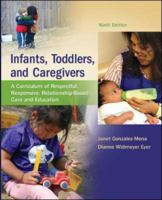
Out of Stock

Bestsellers

from $55.69

Non-Fiction
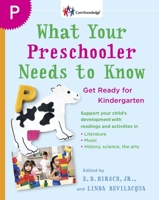
from $15.29

from $10.49
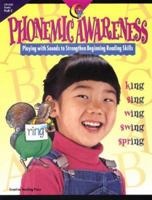
from $15.99

from $13.49

Education & Reference
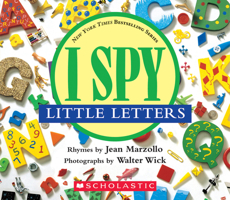
Elementary Education
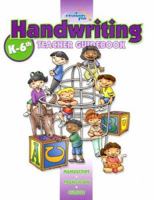
Instruction Methods

from $17.49
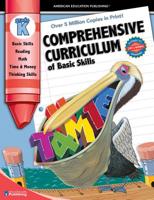
from $10.97
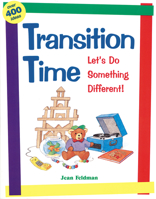
Schools & Teaching
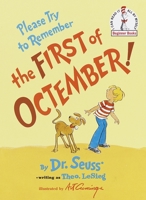
from $31.60
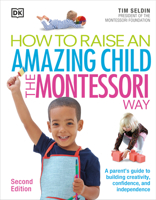
from $12.29
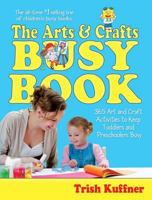
Commonalities among these books on Early Childhood Education include a focus on child development, the importance of play-based learning, and the use of hands-on activities to promote learning. Many of the books also discuss specific approaches to teaching, such as Montessori or Reggio Emilia, and provide practical advice for educators and parents. Additionally, there are numerous guides for teaching specific subjects like reading, math, and art. Overall, these books aim to support the growth and development of young children through engaging and effective educational practices.
Popular Categories
- Teen and Young Adult
- Literature & Fiction
- Mystery & Thriller
- Sci-fi & Fantasy
- Large Print Books
- Rare & Collectible Books
- ShareBookLove
- Educator Benefits
- Librarian Benefits
- e-Gift Cards
- View Mobile Site
- Shopping Cart
- Order History
Partnerships
- Library Program
- Help & Support
- Shipping Costs
- Return Policy
- Website Suggestions
- Our Purpose
- Social Responsibility
- Testimonials

- © 2022
Piaget and Vygotsky in XXI century
Discourse in early childhood education
- Nikolay Veraksa 0 ,
- Ingrid Pramling Samuelsson 1
Lomonosov Moscow State University, Moscow, Russia
You can also search for this editor in PubMed Google Scholar
Department of Education, Communication and Learning, University of Gothenburg, Göteborg, Sweden
- Analyzes issues of modern childhood education from both Piaget and Vygotsky perspectives
- Introduces the methodology of work and practice that will take advantage of Piaget and Vygotsky
- Includes contributions from well-known and well-respected professionals from different countries
Part of the book series: Early Childhood Research and Education: An Inter-theoretical Focus (ECRE, volume 4)
30k Accesses
8 Citations
- Table of contents
About this book
Editors and affiliations, about the editors, bibliographic information.
- Publish with us
Buying options
- Available as EPUB and PDF
- Read on any device
- Instant download
- Own it forever
- Compact, lightweight edition
- Dispatched in 3 to 5 business days
- Free shipping worldwide - see info
- Durable hardcover edition
Tax calculation will be finalised at checkout
Other ways to access
This is a preview of subscription content, log in via an institution to check for access.
Table of contents (11 chapters)
Front matter, introduction.
- Nikolay Veraksa, Ingrid Pramling Samuelsson
Vygotsky’s Theory: Culture as a Prerequisite for Education
Nikolay Veraksa
Learning and Development in a Designed World
- Roger Säljö, Åsa Mäkitalo
- Dialectical Thinking
- Nikolay Veraksa, Michael Basseches
Social Representations of Play: Piaget, Vygotskij and Beyond
- Bert van Oers
Children’s Perspectives Informing Theories and Nordic Preschool Practice
- Camilla Björklund, Ingrid Pramling Samuelsson
Preschool Children’s Pretend Play Viewed from a Vygotskyan and a Piagetian Perspective
- Polly Björk-Willén
Piaget and Vygotsky: Powerful Inspirators for Today’s Students in Early Education and Developmental Psychology
- Elly Singer
Constructivism and Social Constructivism in the Study of Relationship Between Early Childhood Education Quality and Executive Function at 5–6 years Old
- Anastasia Belolutskaya, Darya Bukhalenkova, Evgeniy Krasheninnikov-Khait, Igor Shiyan, Olga Shiyan, Aleksander Veraksa
Piaget and Vygotsky’s Play Theories: The Profile of Twenty-First-Century Evidence
- Nikolay Veraksa, Yeshe Colliver, Vera Sukhikh
Vygotsky and Piaget as Twenty-First-Century Critics of Early Childhood Education Philosophizing
- Niklas Pramling
- Cognitive Development
- Emotional Development
- Social Development
- Education Environment
- Early Childhood Education
- Quality of Education
- Cultural Tools in Education
- Digital Tools in Education
- Play in education
Ingrid Pramling Samuelsson
Nikolay Veraksa is a Professor at Lomonosov Moscow State University, Leading Researcher of the Russian Academy of Education, Moscow City University, Chair of the UNESCO Chair in Early Childhood Education and Development, Honored Doctor of Gothenburg University. Has an experience as an invited editor of the International Journal of Early Years Education (2011), European Early Childhood Education Research Journal (2014); published book Vygotsky’s Theory in Early Childhood Education and Research (edited by Nikolay Veraksa and Sonja Sheridan) – Routledge, 2018.
Book Title : Piaget and Vygotsky in XXI century
Book Subtitle : Discourse in early childhood education
Editors : Nikolay Veraksa, Ingrid Pramling Samuelsson
Series Title : Early Childhood Research and Education: An Inter-theoretical Focus
DOI : https://doi.org/10.1007/978-3-031-05747-2
Publisher : Springer Cham
eBook Packages : Education , Education (R0)
Copyright Information : The Editor(s) (if applicable) and The Author(s), under exclusive license to Springer Nature Switzerland AG 2022
Hardcover ISBN : 978-3-031-05746-5 Published: 19 August 2022
Softcover ISBN : 978-3-031-05749-6 Published: 20 August 2023
eBook ISBN : 978-3-031-05747-2 Published: 18 August 2022
Series ISSN : 2946-6091
Series E-ISSN : 2946-6105
Edition Number : 1
Number of Pages : VIII, 206
Number of Illustrations : 22 b/w illustrations, 5 illustrations in colour
Topics : Early Childhood Education , Educational Philosophy , Developmental Psychology , Education, general , Philosophy of Education , Curriculum Studies
Policies and ethics
- Find a journal
- Track your research

- Permissions
- Newsletters
- Download Hub
- Early Childhood
From screening and assessment tools to practical classroom guides, our resources empower you to support the healthy development of all young children and get them ready to learn.
Whether you’re a teacher, a specialist, a clinician, or a professor preparing the next generation of educators and providers, we can help you reach your ultimate goal: better outcomes for every young child and family.
Our resources help you partner with parents to check babies’ development in their first months of life, boost young children’s progress in key areas, and create early childhood classrooms that welcome and support every young learner.
Sign up for our Early Childhood newsletter! Get tip sheets, articles, webinars, and breaking news delivered to your inbox each month! Signup is quick and easy. Sign up now
Explore our resources
- Developmental Screening, Assessment, and Intervention
Social-emotional development and learning
Early language and literacy development, multilingual learners, early intervention, early childhood inclusion, equity in early education, free resources.
- Higher education support
Developmental screening, assessment, and intervention
As the publisher of ASQ® and other trusted, widely used tools, we’re the leader in developmental screening, assessment, and intervention. Our bestselling tools and curricula help you partner with parents to check young children’s development, boost their progress in key areas, and celebrate their exciting developmental milestones.

Search all screening and assessment resources.
Nurturing social-emotional development—and identifying potential challenges in the early years—makes a critical difference in the lives of young children. We help you with every key element of fostering healthy social-emotional development, including detecting delays early, implementing the evidence-based Pyramid Model, and helping kids understand and deal with emotions.

View all social -emotional development and learning resources.
Strong early language and literacy skills set the stage for later success in school and in life. Our textbooks, tools, and curricula fully prepare you to help close the 30 million word gap some children experience, support dual language learners, identify kids who need extra help with early literacy skills, and put all young children on the path to reading success.
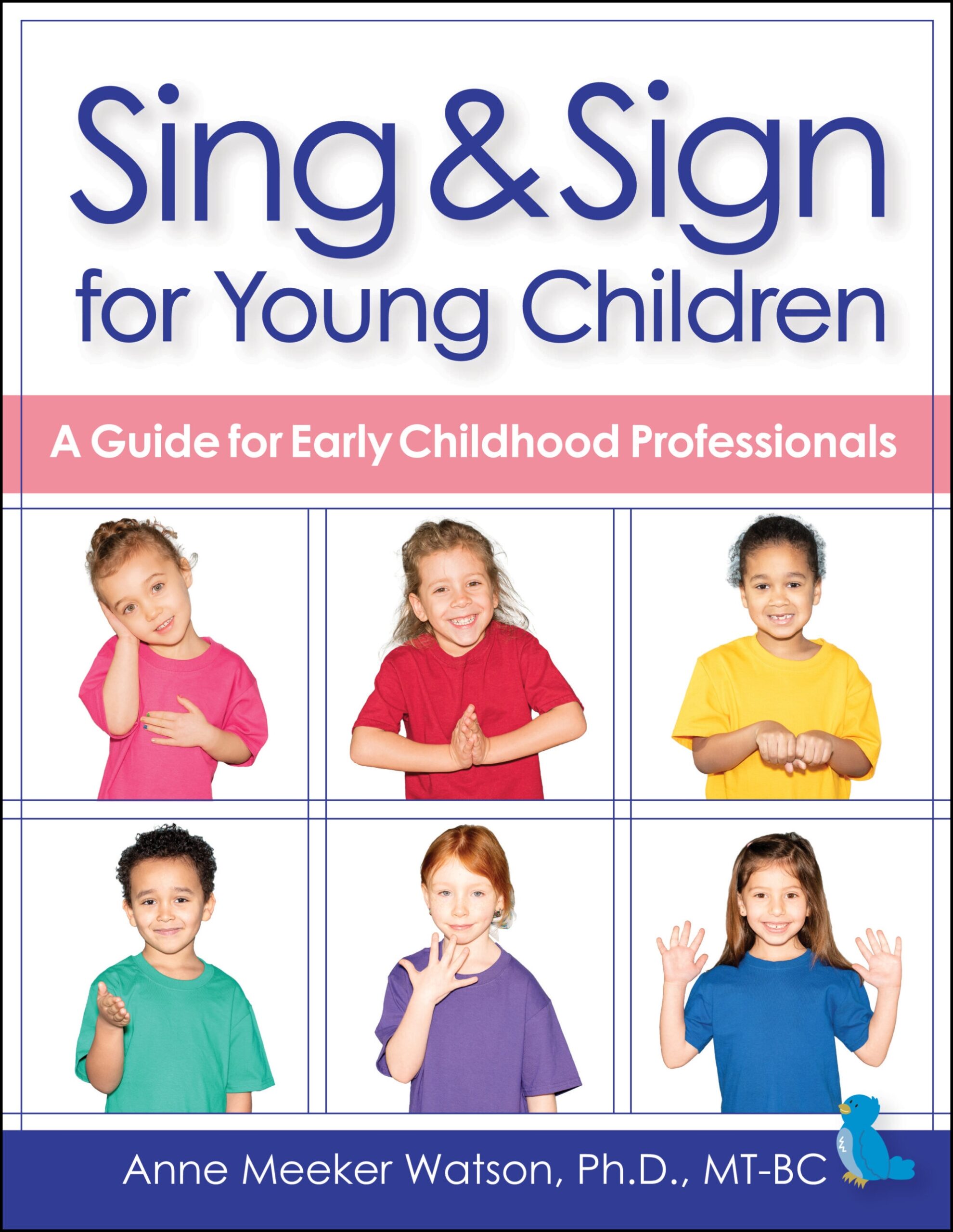
View all early language and literacy resources.
How can your program support the academic and social-emotional development of multilingual learners? From books filled with evidence-based teaching practices to reliable screening and assessment tools, these resources will help you increase educational equity and improve outcomes for culturally and linguistically diverse children.
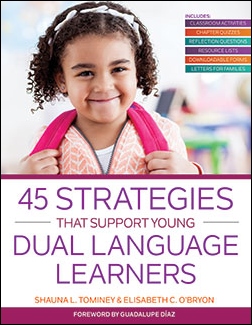
View all multilingual resources.
Early intervention not only directly supports the growth and development of young children, it also enhances the capacity of parents and other care providers to promote healthy development on their own. These resources will help early intervention professionals strengthen their skills to ensure the best outcomes for the families they serve.

View all early intervention resources.
Discover how to reach and teach all children with our practical guidebooks, your key to creating successful inclusive programs that welcome every learner. Our expert authors show you how to put universal design for learning into action, overcome inclusion barriers, adapt your curriculum, work effectively with families, and more.
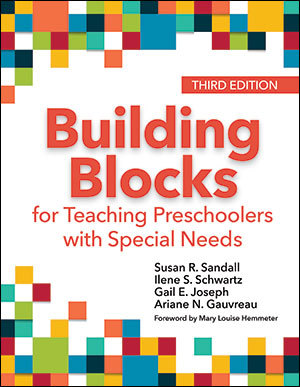
View all early childhood inclusion resources.
Addressing inequitable practices and policies is key to ensuring that every child in your school or program learns, belongs, and thrives. Use these empowering resources to promote equity, access, and belonging for all children and families.
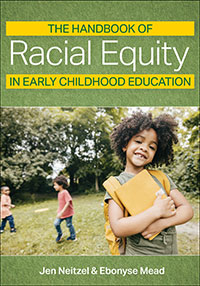
Download some of our most popular free resources that support the goals of early childhood educators and providers.
Developmental Screening Toolkit
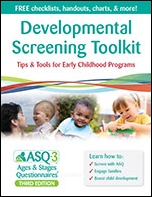
Social-Emotional Toolkit

Tip sheets, parent handouts, and activities from ASQ®:SE-2
Involving Families Toolkit

Tips and strategies for engaging families in assessment and intervention
From Babbles to Books

Free ebook on supporting early language and literacy development
Early Childhood Newsletter
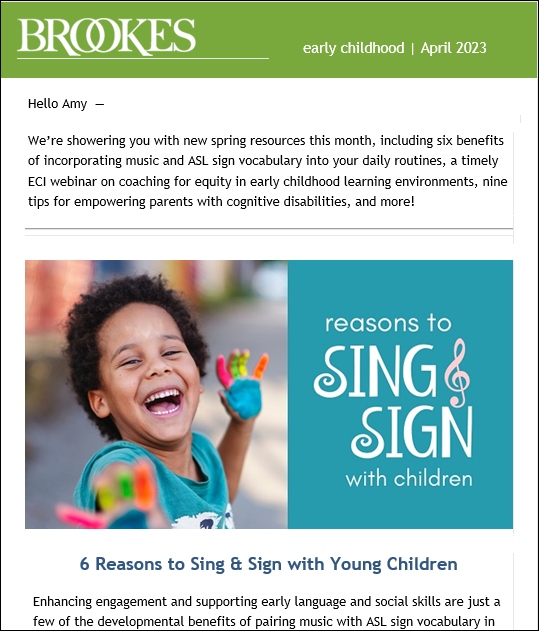
Monthly articles, tip sheets, and breaking news, and more
Brookes Blog

- Screening & Assessments
- Seminars & Institutes
- ePyramid Online Learning Modules
- Resource Library
- Ordering Information
- For Sellers & Resellers
- Higher Education Opportunity Act (HEOA)
- Translations
- Alternate Formats
- Announcements
- Augmentative and Alternative Communication Series
- Communication and Language Intervention Series
- National Center for Research on Early Childhood Education
- Prevent-Teach-Reinforce Series
- Systems of Care for Children’s Mental Health Series
- Teachers’ Guides to Inclusive Practices
- The Brookes Transition to Adulthood Series
- The Extraordinary Brain Series
- The Inclusive School Practices Series
- Strong Kids Curricula
- MILLIE – Multitiered Interventions for Language & Literacy in Early Childhood
- Top Courses
- Online Degrees
- Find your New Career
- Join for Free

Introduction to Early Childhood
This course is part of Home-Based Child Care Specialization
Taught in English
Some content may not be translated

Instructor: JoLynn Fiorentino
Financial aid available
8,580 already enrolled

(41 reviews)
Recommended experience
Beginner level
There are no prerequisites for the course. Individuals should have an interest in pursuing early childhood education programs.
What you'll learn
You'll learn the fundamentals of early childhood development, the importance of play, and the significance of family in early education programs.
Skills you'll gain
- Decision-Making
- Communication
- Planning & Instruction
Details to know

Add to your LinkedIn profile
See how employees at top companies are mastering in-demand skills

Build your subject-matter expertise
- Learn new concepts from industry experts
- Gain a foundational understanding of a subject or tool
- Develop job-relevant skills with hands-on projects
- Earn a shareable career certificate

Earn a career certificate
Add this credential to your LinkedIn profile, resume, or CV
Share it on social media and in your performance review

There are 6 modules in this course
This course is targeted toward individuals wishing to operate a family day care center, and it covers topics including the fundamentals of early childhood development; the importance of play and Developmentally Appropriate Practice; and the significance of building strong family-educator relationships and how to achieve them.
Since a Family Policy Handbook is essential for anyone operating a family day care center, this course includes the development of one of three imperative sections of the handbook. The remaining two sections are created in subsequent courses of the Home-Based Childcare series available on Coursera.
Introduction: Family Policy Handbook Project
The intention of this module is to introduce you to the Home-Based Child Care Final Project, including the rubric which will be used to score your final project submission.
What's included
2 readings • total 40 minutes.
- Family Policy Handbook: Introduction to the Final Project for Home-Based Child Care • 30 minutes
- Family Policy Handbook: Purpose • 10 minutes
Foundations for Early Childhood
In this module, we define Developmentally Appropriate Practice and discuss the importance of play in early childhood. We also outline the domains of children's learning.
1 video 2 readings 1 discussion prompt
1 video • Total 24 minutes
- Foundations for Early Childhood • 24 minutes • Preview module
2 readings • Total 55 minutes
- Developmentally Appropriate Practices with Young Children • 10 minutes
- Family Policy Handbook Sections #1-3: Introduction, Philosophy, and Curriculum • 45 minutes

1 discussion prompt • Total 10 minutes
- Shifting to better choices • 10 minutes
Family Engagement
In this module, we discuss teacher/family relationships, including ways to communicate and involve families in early childhood programs.
1 video • Total 19 minutes
- Family Engagement • 19 minutes • Preview module
2 readings • Total 50 minutes
- Strategies for Family Engagement • 20 minutes
- Family Policy Handbook Section #4: Parents/Family Engagement • 30 minutes
- How to involve families • 10 minutes
Observation and Assessment of Children
In this module, we will explore the use of observations in early childhood settings along with the varied assessments utilized and their purpose. In addition, we will look at developmentally-appropriate assessment strategies.
1 video 3 readings 1 discussion prompt
1 video • Total 23 minutes
- Assessment in Early Childhood • 23 minutes • Preview module
3 readings • Total 70 minutes
- Resources/Links reference in Assessment in Early Childhood • 30 minutes
- DAP: Observing, Documenting, and Assessing Children's Development and Learning • 10 minutes
- Family Policy Handbook Section #5: Observation and Assessment Techniques • 30 minutes
- Assessing children • 10 minutes
Guiding Children's Behavior
We will explore factors that influence behavior in this module. We will also discuss the importance of regular, predictable, and positive learning environments along with various guidance techniques for young children.
1 video • Total 33 minutes
- Guiding Children's Behavior • 33 minutes • Preview module
- Guiding Children's Behaviour • 20 minutes
- Family Policy Handbook Section #6: Discipline/Behavior Management Policy • 30 minutes
- Classroom management • 10 minutes
Inclusion and Diversity
This module is geared toward understanding strategies for teaching in an inclusive setting, recognizing culturally-diverse classrooms and establishing anti-bias curriculum.
1 video 3 readings 1 peer review 1 discussion prompt
1 video • Total 38 minutes
- Inclusion and Diversity • 38 minutes • Preview module
3 readings • Total 100 minutes
- Preparing Young Children for the Inclusion of Children with Disabilities into the Classroom • 10 minutes
- Family Policy Handbook Section #7: Supporting Diversity • 30 minutes
- Course Resources (OPTIONAL) • 60 minutes
1 peer review • Total 60 minutes
- Family Policy Handbook Sections #1-7 • 60 minutes
- Inclusion • 10 minutes
Instructor ratings
We asked all learners to give feedback on our instructors based on the quality of their teaching style.

The State University of New York, with 64 unique institutions, is the largest comprehensive system of higher education in the United States. Educating nearly 468,000 students in more than 7,500 degree and certificate programs both on campus and online, SUNY has nearly 3 million alumni around the globe.
Recommended if you're interested in Education
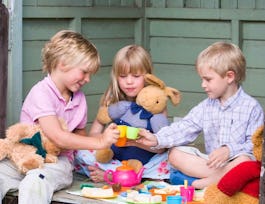
The State University of New York
Home-Based Child Care
Specialization

Utrecht University
Understanding child development: from synapse to society

Commonwealth Education Trust
Foundations of Teaching for Learning: Developing Relationships

Child Care as a Business
Why people choose coursera for their career.

Learner reviews
Showing 3 of 41
Reviewed on Jan 5, 2023
I enjoyed the course. I received a 100%, and I also liked the project at the end. It required me to think of things that I had not considered before.
Reviewed on May 22, 2023
Great information that can be immediately applied to my child care. Useful tips and ideas for what to include in our handbook as well.
Reviewed on Jun 4, 2023
for learning through play approach develop by early childhood education

Open new doors with Coursera Plus
Unlimited access to 7,000+ world-class courses, hands-on projects, and job-ready certificate programs - all included in your subscription
Advance your career with an online degree
Earn a degree from world-class universities - 100% online
Join over 3,400 global companies that choose Coursera for Business
Upskill your employees to excel in the digital economy
Frequently asked questions
When will i have access to the lectures and assignments.
Access to lectures and assignments depends on your type of enrollment. If you take a course in audit mode, you will be able to see most course materials for free. To access graded assignments and to earn a Certificate, you will need to purchase the Certificate experience, during or after your audit. If you don't see the audit option:
The course may not offer an audit option. You can try a Free Trial instead, or apply for Financial Aid.
The course may offer 'Full Course, No Certificate' instead. This option lets you see all course materials, submit required assessments, and get a final grade. This also means that you will not be able to purchase a Certificate experience.
What will I get if I subscribe to this Specialization?
When you enroll in the course, you get access to all of the courses in the Specialization, and you earn a certificate when you complete the work. Your electronic Certificate will be added to your Accomplishments page - from there, you can print your Certificate or add it to your LinkedIn profile. If you only want to read and view the course content, you can audit the course for free.
What is the refund policy?
If you subscribed, you get a 7-day free trial during which you can cancel at no penalty. After that, we don’t give refunds, but you can cancel your subscription at any time. See our full refund policy Opens in a new tab .
Is financial aid available?
Yes. In select learning programs, you can apply for financial aid or a scholarship if you can’t afford the enrollment fee. If fin aid or scholarship is available for your learning program selection, you’ll find a link to apply on the description page.
More questions
A guide to early learning: What to know for reading readiness
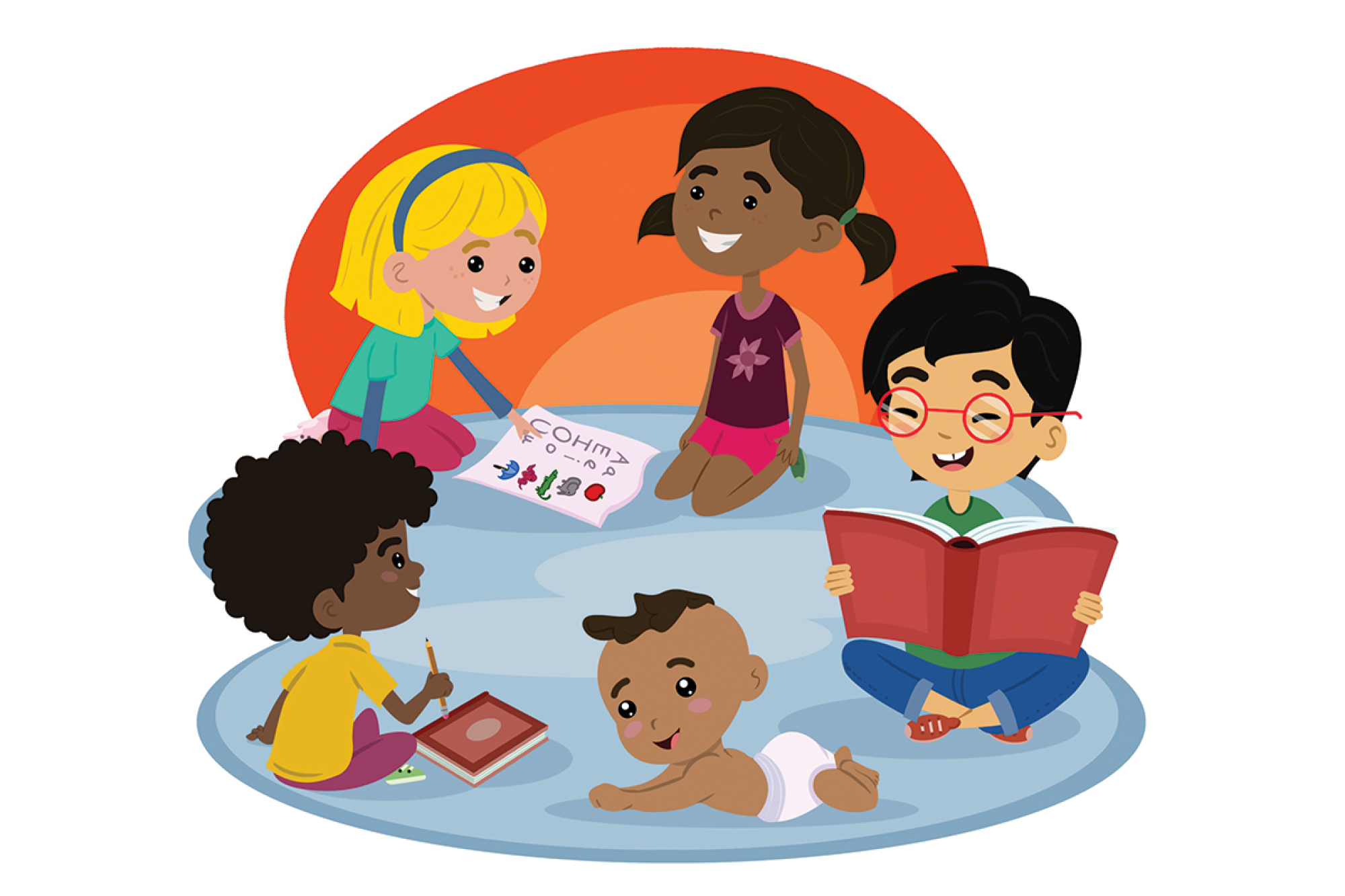
- Show more sharing options
- Copy Link URL Copied!
The 2024 Reading by 9 guide was created through the generous support of the Ballmer Group . This year’s guide spotlights articles, activities, book recommendations and more for parents and educators of children ages 0-5.
- Leer en español
- Download the reading guide
- More on Reading by 9
Dear parents, teachers and educators,
Whether your child is just a few months old or preparing to start kindergarten, you can read to them and build a foundation for future growth and learning. Reading to your young child can teach them about emotions and empathy; it can help enrich their vocabulary, foster learning across languages and prepare them for their school journey.
For 26 years, Reading by 9 has put together an assortment of resources and book recommendations to help parents build their child’s literacy skills. Available in English and Spanish, this year’s literacy guide is filled with research-based advice from local organizations and experts on topics ranging from social-emotional development to bilingual learning .
We hope these resources will help direct you as you embark on a journey through literacy with the child in your life and introduce them to the wonderful world of reading.
Setting a foundation for reading
Learn about the benefits of reading and how you can encourage your child to enjoy it.
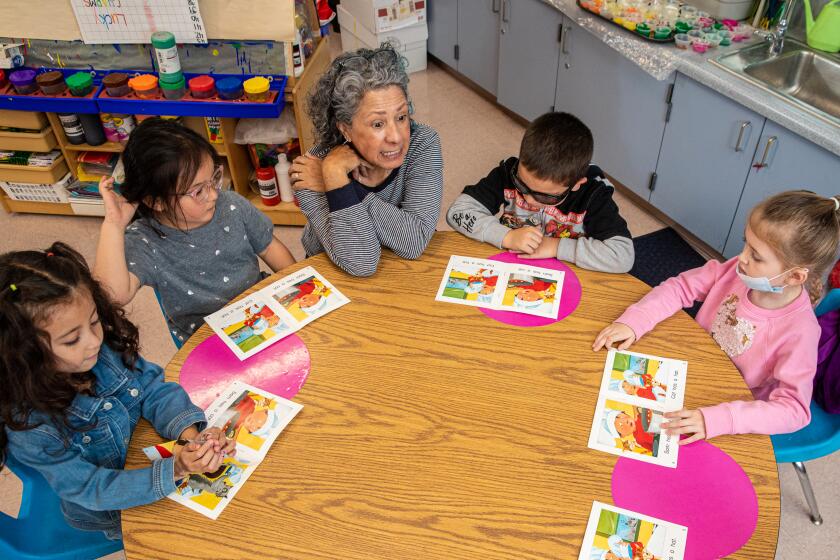
These 3 activities can foster your child’s language development before transitional kindergarten
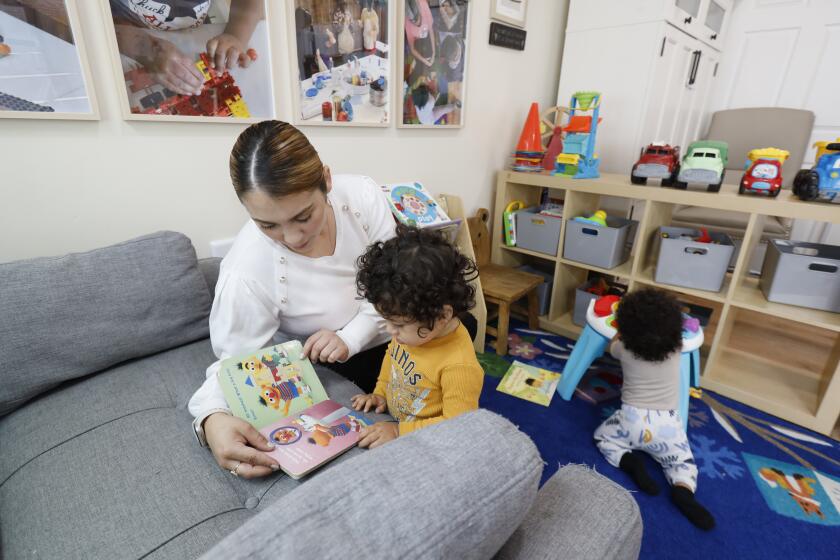
Babies learn new skills every day. Here’s what to look out for when you read to them.

It’s never too early to read to your child. Use these tips to make it fun.
How literacy can support your baby’s growth.
Literacy is integral to development. Learn how reading can help your child.
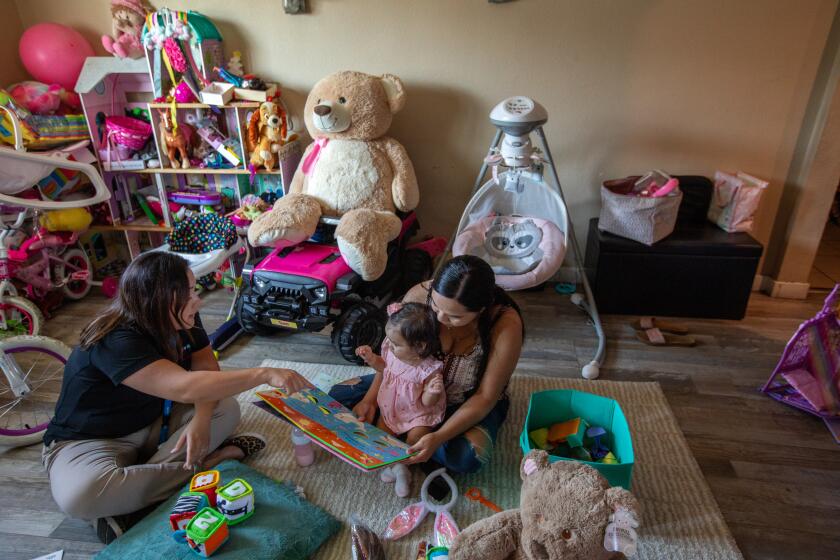
Read colorful picture books and limit screen time to enhance your baby’s visual development

How reading allows kids’ mental health to flourish and what you can do to help foster it

Three actions you can take if developmental delays are impacting your baby’s literacy
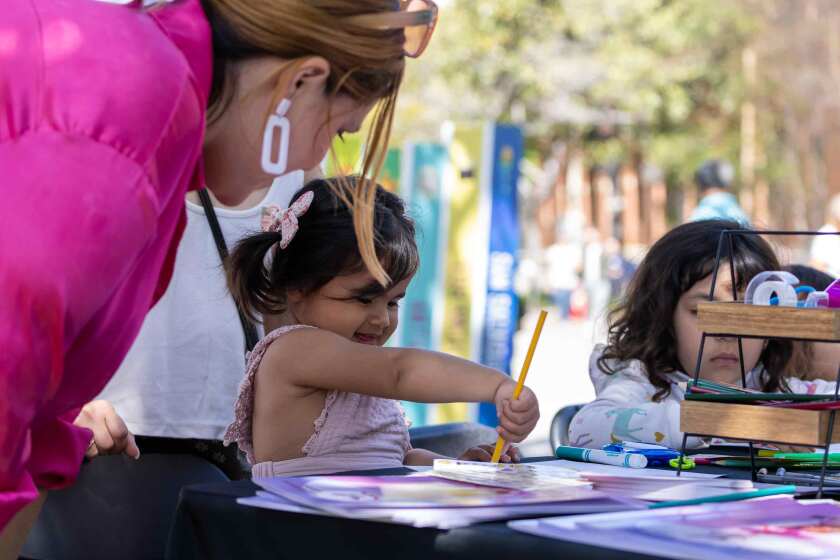
Your baby is a linguistic dynamo. Here’s how to turbocharge their superpower
Children’s desk, read aloud with your baby.
The Coquíes Still Sing

Los Coquíes Aún Cantan

Book Recommendations
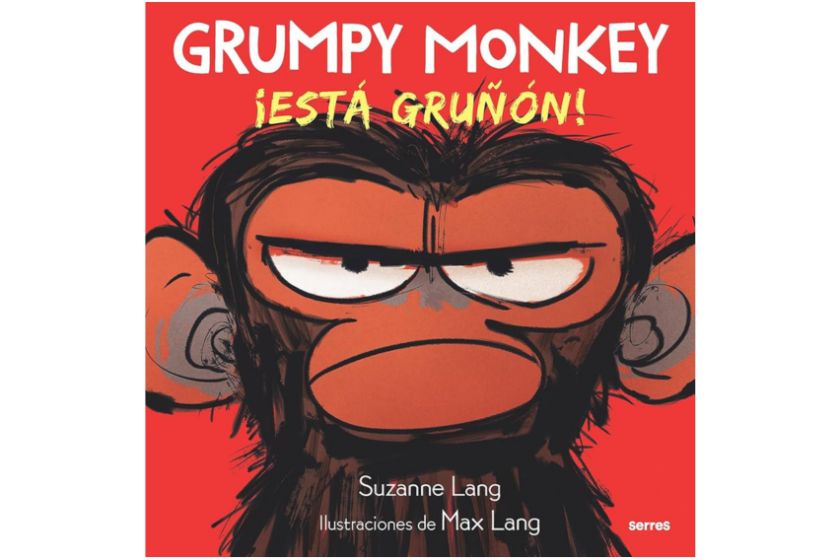
Grumpy Monkey / ¡Está gruñón!
By Suzanne Lang, Max Lang Jim is in a horrible mood and just can’t shake it. His friends make suggestions but Jim can’t handle their kindness and throws a fit. Sometimes everyone just needs a day to feel grumpy. Buy here
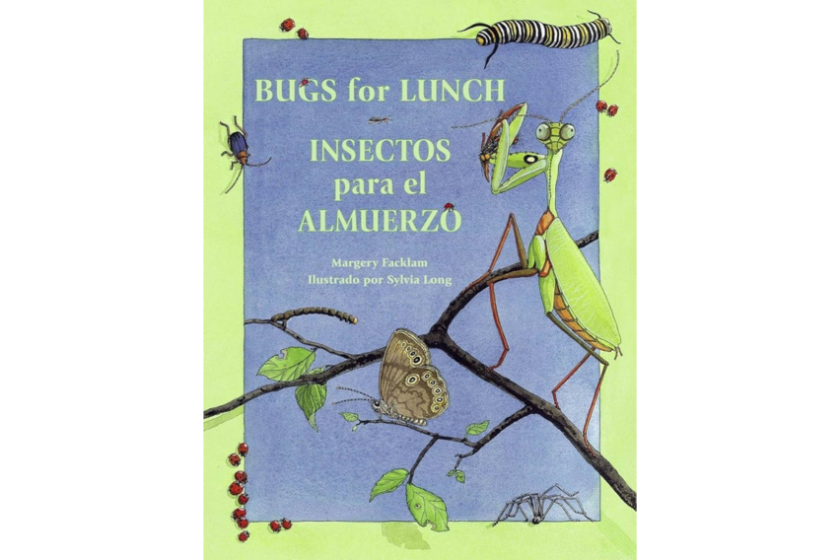
Bugs for Lunch / lnsectos para el almuerzo
By Margery Facklam, Sylvia Long Who eats bugs for lunch? Humans, animals and plants all do in this informative book of poems. Satiate your little reader’s quest for all things creepy and crawly with this fun book. Buy here

Diez Deditos / Ten Little Fingers
By José-Luis Orozco, Elisa Kleven Folk songs from many different Spanish-speaking countries grace the pages of this book of action songs. Follow diagrams and music included to delight young readers. Buy here

Freight Train / Tren de carga
By Donald Crews This Caldecott Honor book helps young readers learn their numbers and colors in both English and Spanish. Help young readers with positional language and basic vocabulary using this classic book about trains. Buy here
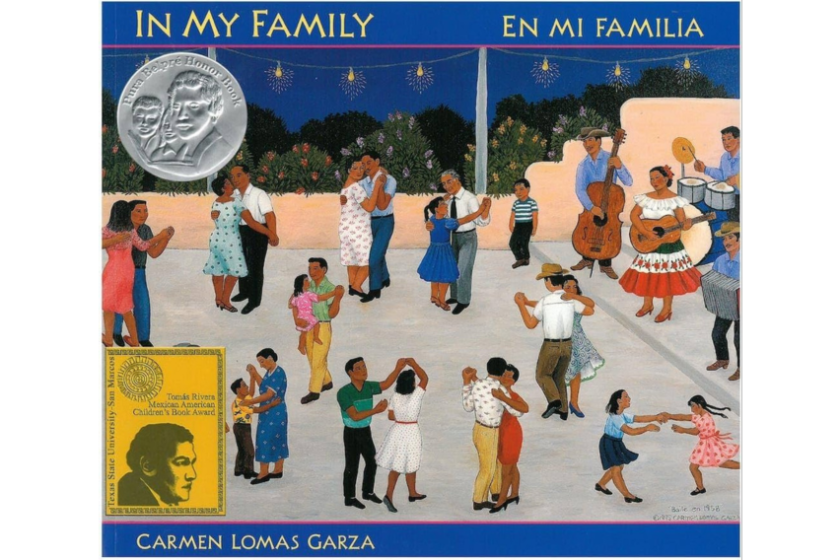
In My Family / En mi familia
By Carmen Lomas Garza Carmen Lomas Garza’s paintings are described individually in both English and Spanish in this beautiful picture book. Illustrations about community and family are paired with memories about growing up in Kingsville, Texas. Buy here
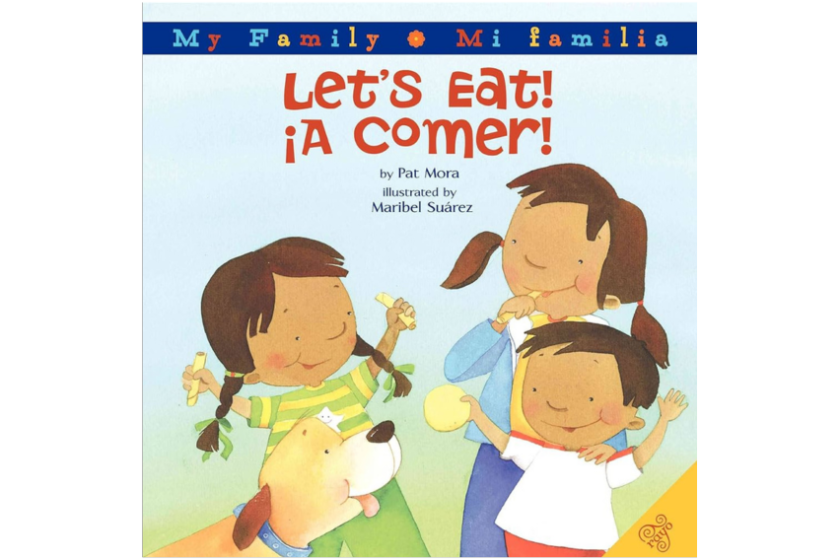
Let’s Eat! / ¡A comer!
By Pat Mora, Maribel Suarez Written by the founder of the family literacy initiative, Children’s Day, this book depicts a typical day with young children. Build bilingual vocabulary around everyday family activities. Buy here

The Lizard and the Sun / La Lagartija y el Sol
By Alma Flor Ada, Felipe Dávalos After the sun disappears, people and animals are afraid. But a brave lizard refuses to give up until she brings back the light. Buy here

Who Hops? / ¿Quién salta?
By Katie Davis Some animals don’t hop, others can’t crawl. Help your young reader discover how different creatures get around in this silly picture book, available in both English and Spanish. Buy here
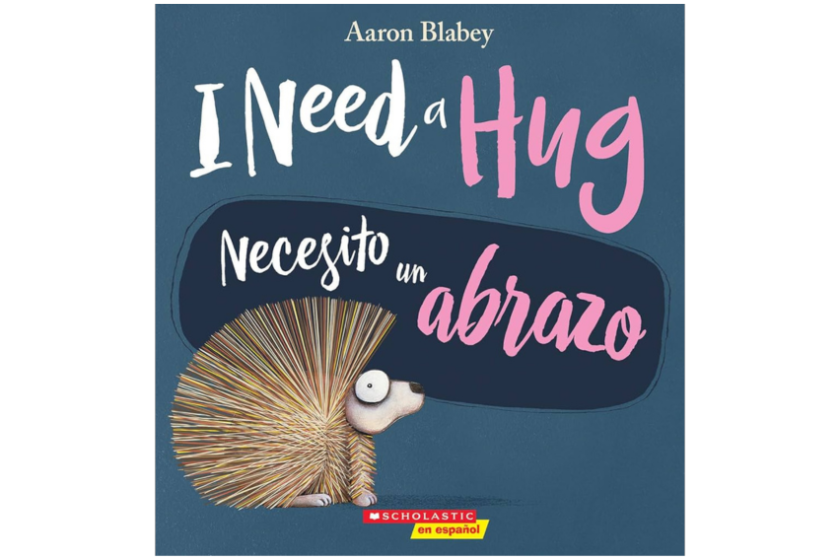
I Need a Hug / Necesito un abrazo
By Aaron Blabey A short and silly book about a porcupine in need of a hug (and a snake that just wants a kiss). Each page is translated in both English and Spanish within clear speech bubbles for the reader. Buy here
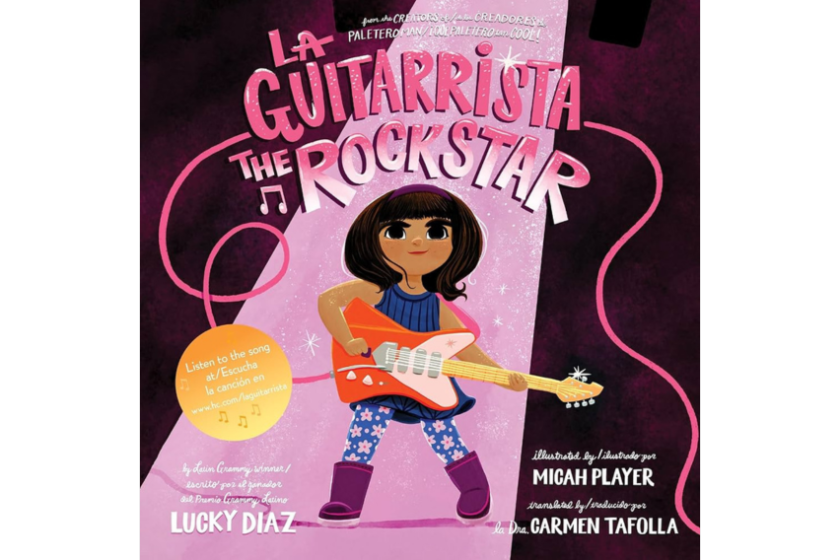
The Rockstar / La Guitarrista
By Lucky Diaz, Micah Player, Carmen Tafolla A young girl in Los Angeles follows her dreams to become a rockstar, using a broken guitar that she found in the trash. With the help of her community, she repairs and repaints the guitar to look brand new. Fully bilingual edition available May 7, 2024. Buy here
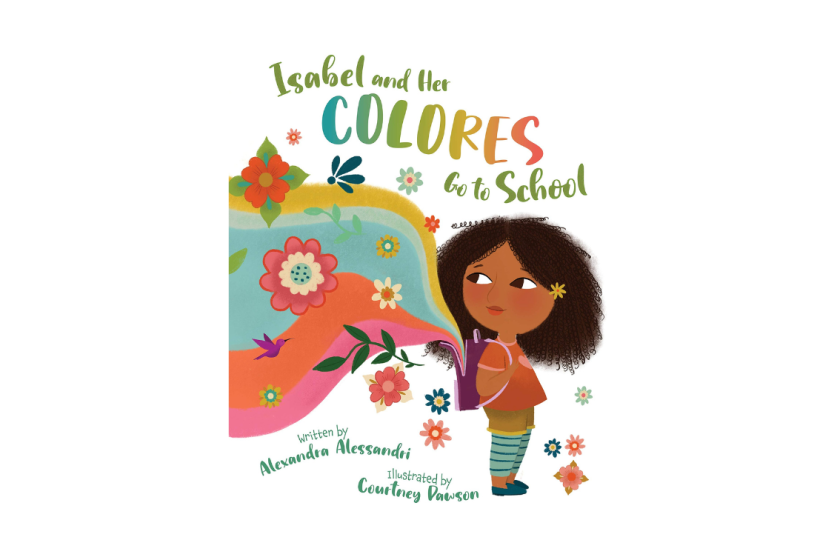
Isabel and her Colores go to School
By Alexandra Alessandri, Courtney Dawson Isabel speaks Spanish. When she goes to school, she has a hard time feeling comfortable because her classmates all speak English. With the help of her colores, she finds that friendship is a universal language. Buy here
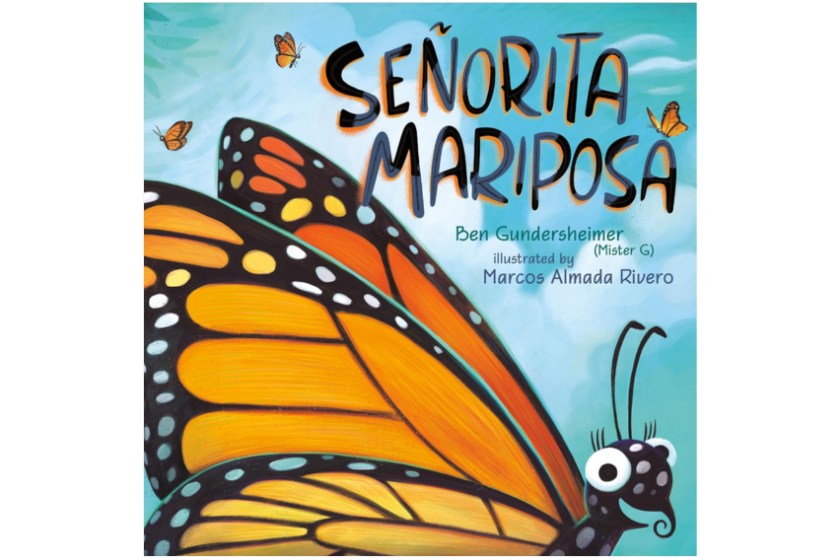
Señorita Mariposa
By Ben Gundersheimer, Marcos Almada Rivero Señorita Mariposa makes her flight from the U.S. and Canada down to Mexico. Written in rhymes, some in English, others in Spanish, this book details the trip of the Monarch Butterfly. Read about how she delights the animals and people along her way. Buy here
Literacy Programs
826la - sunset blvd location, 826la - venice blvd. location, access books, children's institute, csun l.a. times literacy center, news literacy project, parentis foundation, reading is fundamental, reading partners, reading to kids, ready, set, read, read to a child, the book foundation, support services, abriendo puertas/opening doors, families forward learning center, hands together, koreatown youth and community center, little by little, mar vista family center preschool, mexican american opportunity foundation, pathways la, plaza de la raza, proyecto pastoral la guarderia, south central lamp, los angeles public library, los angeles county library, orange county public libraries.
This supplement did not involve the editorial or reporting staff of the Los Angeles Times except where noted.
The guide is free to parents, educators and organizations working with children and families. To contact us with comments and questions or to receive more information, email [email protected].
Los Angeles Times Public Affairs manages philanthropy, community engagement and corporate social responsibility at the nation’s largest metropolitan daily news organization. We broaden perspectives, empower storytellers and inspire our community to question and transform the world around them. For more information, visit latimes.com/readingby9 .
Copyright © 2024 Continu ed Early Childhood Education - All Rights Reserved
Online continuing education for early childhood education providers
- 300+ practice, research-based training courses
- Courses to earn or renew a CDA Credential™
- New courses added regularly
- Course completion certificates provided

Search by course topic
Find the courses that fit your needs.
IACET accredited
Continu ed is accredited by the International Association for Continuing Education and Training (IACET).
Get the quality ECE hours you need
The courses you want, the PD hours you need—tailored for ECE providers like you.
Take as many PD courses as you like, as often as you want, for one low price, with no additional cost for CDA courses.
Learn and earn hours anytime, anywhere, and on any device, including your phone or tablet. And check the library often; new courses are added regularly!
You’ll find high-quality, engaging content from trusted experts. Presenters cover valuable topics such as challenging behavior, family engagement, and health and safety.
We track your CE and course completion certificates are provided.
Explore valuable topics + build your skills
We’re regularly adding new courses so that you can stay up to date on best practices for your classroom, school, or child care center.
Free course: Earn PD hours!
New to Continu ed ? Take a free course to see how easy it can be to earn PD hours online. (No credit card. No commitment.)
Challenging behavior
Family engagement, health & safety, special needs, explore all our topics in the course library >, but don’t just take our word for it, cda training courses.
Earn the 120 clock hours you need to apply for your CDA Credential, or earn hours to help meet your 45-hour requirement for CDA renewal! CDA Credential packages are available for Family Child Care, Preschool, and Infant-Toddler settings.
Our partners in online professional development
Continu ed partners with Region 9 Head Start Association to offer a robust series of online courses designed to fit the needs of early childhood educators.
Continu ed offers online courses that meet the learning requirements for the Child Development Associate® (CDA) Credential™ and CDA renewal.
Extensive course library
Because you need training courses to meet your professional development goals, Continu ed provides a convenient and affordable online solution with practical, research-based courses. Increase your knowledge, build your skills, and earn the hours you need for training or to earn or renew your CDA Credential. Courses are conveniently available in multiple formats to fit your preference and your busy schedule. Course completion certificates are provided.
Early childhood education membership
Our annual membership gives you unlimited access to professional development training. Take as many courses as you want. Our high-quality, research-based courses are presented by leading experts in topics such as child development, child care training, and learning environments. The course library is developed and overseen by an experienced team of early childhood professionals and instructional technology experts.
The most relevant course topics
To best serve teachers, child care providers, and other ECE providers, Continu ed offers courses that address core competencies and other valuable professional development topics such as child growth and development, lesson planning, and family engagement/parent involvement.
Get new CE courses and special offers delivered straight to your inbox!
Our site uses cookies to improve your experience. By using our site, you agree to our Privacy Policy .
- Skip to content
- Skip to search
- Staff portal (Inside the department)
- Student portal
- Key links for students
Other users
- Forgot password
Notifications
{{item.title}}, my essentials, ask for help, contact edconnect, directory a to z, how to guides.
- Early childhood education
Transition to school
Learn why it’s important for children to have a successful transition to school and how to support this process.
Importance of transition to school
Research tells us that a successful transition to school helps improve children’s educational and social outcomes. A good transition will help prepare children to make new friends, learn routines, and develop a sense of belonging within the new school environment. It will also help their school to recognise and support children’s developmental needs, interests and skills.
Supporting children to transition to school
Together, families, early childhood education and care (ECEC) services, and school staff all play a role in supporting a child as they transition to school. Visit the below pages for information and resources to help you through this exciting and important period:
- Information for parents and carers
- Information for ECEC services
- Information for schools
- Transition to School Digital Statement
- Transition to School Digital Statement Privacy Collection Statement
- Family Day Care Transition to School Digital Statement Trial
[Narrator] Starting school is a big milestone in a child's life, and a positive transition to school can have a real impact on their longer term academic, social, and wellbeing outcomes. In the year before Kindergarten, strong relationships and planning between schools, families and early childhood education and care services are essential for supporting a child's transition to school.
- We know that the impact for a successful transition is that the students come in, and are much more confident in the school environment and ready to learn, and it really does set them up to be those lifelong learners moving forward throughout their primary years and beyond.
- I was so excited to go to school 'cause I was going to learn new friends.
- I was really excited to learn maths.
- Parents are very much a part of our transition process. They're the keepers of the information on their child, and so we do everything we can to get that information from the parents through interviews, and through information sessions.
- The Transition to School Digital Statement is easily accessible, and it gives you a lot of information about each individual student that's coming to school directly from the early childhood settings, where they're spending a lot of their time prior to that year of school. It is also highly valuable for our learning support team teachers and our assistant principals of early stage one, as it gives them that detailed information before the students enter our school site.
- I was so inspired watching my son's preschool get him ready for school and a thirst for learning. He was ready to learn because of the work the preschool and the Kindergarten teachers did.
[Narrator] We all have a role to play in supporting every child to have a positive transition to school, as they start their journey into Kindergarten and beyond. To learn how you can help prepare children for a life of learning, visit our website.
- Transition through stages
Business Unit:
- Early Childhood Outcomes
Navigation for News Categories
Watch: david seymour announces early childhood education centre changes.
The government has announced changes to the early childhood education sector, which it says will make it easier for new centres to be set up.
ACT leader David Seymour has announced the moves at a Wellington ECE centre, where he read to children while sitting next to a book featuring Jacinda Ardern, before telling reporters the former prime minister was an authoritarian.
He has also signalled plans to introduce mandatory child abuse reporting, while noting the government has not yet made a firm decision on that fraught debate.
The changes will revoke legislative changes allowing the government to decide where early learning services should be, and requirements for ECE centres to have a highly-trained teacher in charge before being allowed to open.
Announcing the changes, Seymour - the Minister for Regulation and Associate Education - said the decision about where services should be located should lie with parents and providers.
"Any other business, the test of whether there's demand is 'do people come and give you their money in return for your services', not 'can you satisfy a government department that people might want to do that if you're allowed to open'.
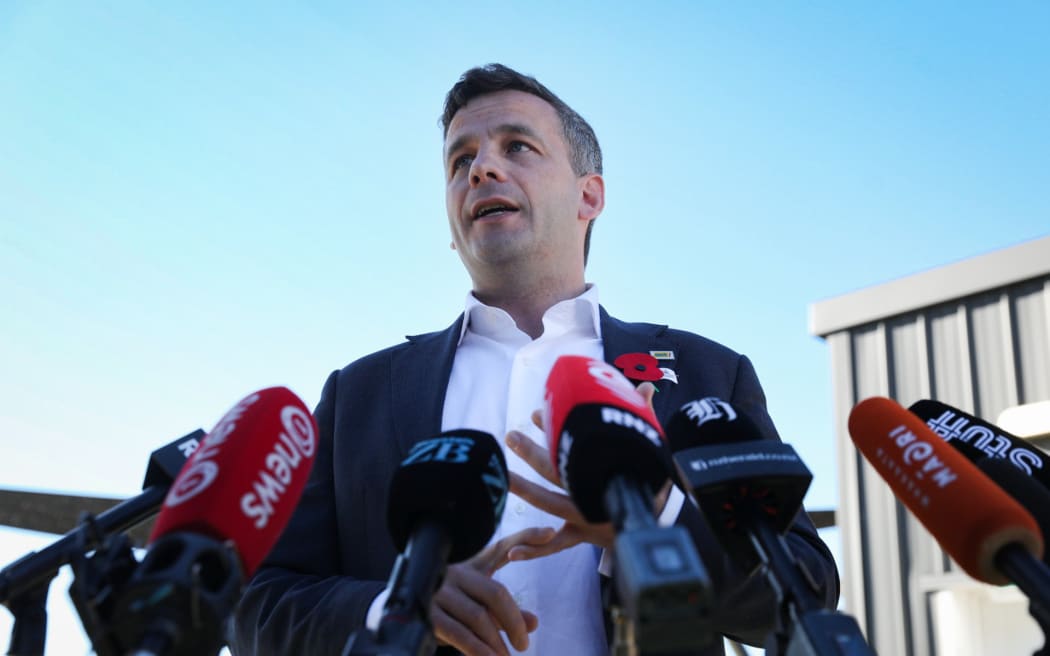
Associate Education Minister David Seymour speaks to media about cutting regulations in the sector. Photo: RNZ / Angus Dreaver
"Ultimately you can't make someone open a centre, and you can't make a parent send their kid to a centre - all you can do with network approval is restrict centres from opening where the parents might have actually wanted one."
The governement is also cancelling a change that would have taken effect in August, requiring any ECE centre to have a more highly qualified teacher to be in charge to be permitted to open.
It would have meant at least one teacher with a Full Practising Certificate (category one or two) would need to be on site. Seymour said the current setting - requiring any registered teacher - would now remain.
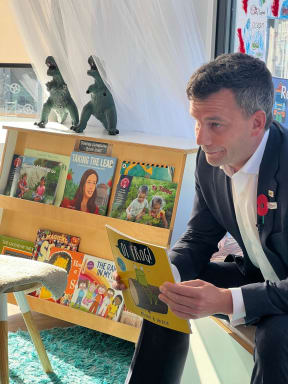
ACT leader David Seymour reads to children, next to 'Taking The Lead', a book about former prime minister Jacinda Ardern. Photo: RNZ / Giles Dexter
"Theoretically you would have to close while that one person went to the bathroom, if that one person you might have was sick you would have to pay a very expensive reliever in order to open.
He said the government would also be doing a funding review, including of the pay parity rules "which are creating enormous cost and inflexibility for the sector".
He signalled the government could look to make child abuse reporting mandatory at ECEs - something many advocates have been calling for - but said it was a "very difficult dilemma" they would need to work through.
"I think we will, but that is something that will come into quite a wide sweep of review," he said. "If somebody hasn't reported then I think they've done a great neglect to that kid ... I'd just make the point that once you make it mandatory to report something you also put a lot of pressure on people to say 'if I tell anyone then it's going to be reported and I could end up getting retribution for reporting it'."
Ahead of his announcement at a centre in Wellington, Seymour read Oi Frog! to the children there. Another book, Taking the Lead: How Jacinda Ardern wowed the world had been placed prominently alongside him.
Seymour would "absolutely" have read the Jacinda Ardern book to the children, but said " Oi Frog! was a lot more entertaining and ironically Oi Frog! seemed to be a warning to children about authoritarian people that tell you what to do all the time.
"Maybe that's why they have the Jacinda book - for a similar purpose - who knows?"
He defended his characterisation of Ardern as authoritarian.
"I think the way that she used power through the Covid era was excessive, it didn't properly balance New Zealanders rights and their welfare and in some cases it actually was found to be illegal."
Prime Minister Christopher Luxon, speaking to reporters in Singapore as part of his trip to Southeast Asia, said he did not agree with Seymour's characterisation.
"He's entitled to his views, I wouldn't describe it that way. I would say that we didn't get everything right in the Covid response and that's why we actually want quite a wide ranging [review] - with a broader set of terms of reference - to look into the Covid response at that time.
"It's important that we take the learnings from that as we go forward into any future events."
He repeated his position it was "quite okay" for the three coalition parties to have different views, and agreed when it was put to him some of Ardern's actions in closing the borders and imposing lockdowns had been authoritarian.
"Well, yes, but again I'd just say to you we're going to have a full review to to say what worked, what didn't work and what did we learn from it all."
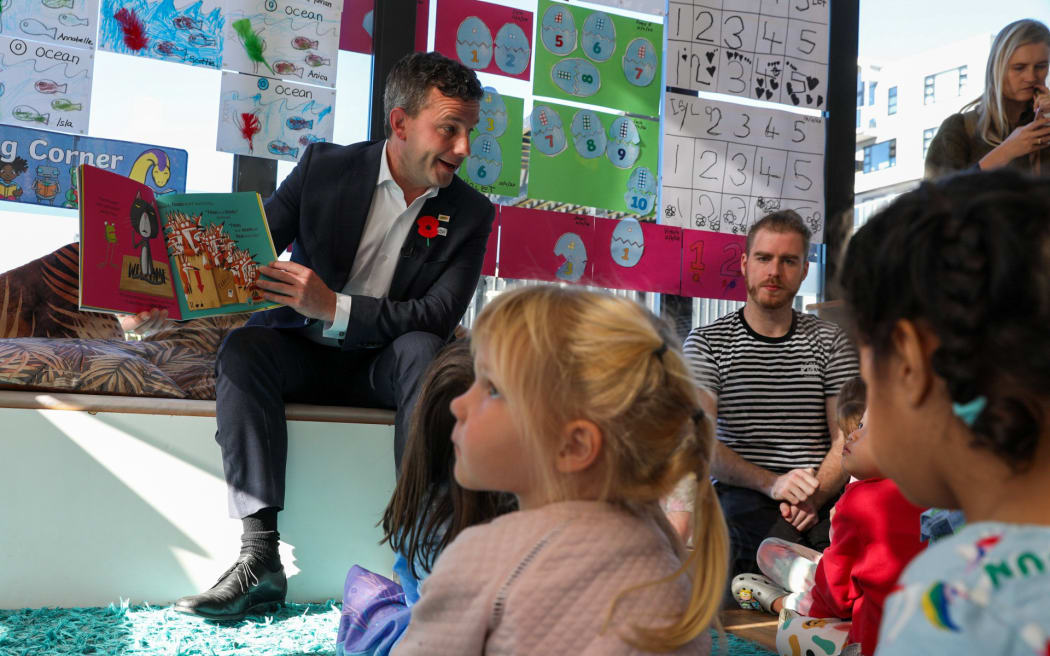
Seymour reads "Oi Frog!" to children at an Early Childhood Education centre in Wellington before speaking to reporters. Photo: RNZ / Angus Dreaver
Sector group and opposition respond
Early Childhood Council chief executive Simon Laube said the sector was "really really relieved" by the moves, as it was currently "incredibly difficult" to set up a new ECE centre.
"Adding about six months to an establishment period of about two-and-a-half years is hugely costly, but it was the lack of certainty that you had with that new step of the process," he said.
"That new step just means that you go through a whole lot of hoops, whole lot of cost, and you don't know if you're going to be able to get a licence at the end of it."

Early Childhood Council chief executive Simon Laube, who was at the announcement this morning. Photo: RNZ / Angus Dreaver
He said some of the safety regulations were just box-ticking exercises adding extra cost, and ECE centres in Wellington had closed despite high levels of demand with no new centres expected in the next few years.
But Labour's Education spokesperson Jan Tinetti said the changes to location requirements were "really disappointing".
"To get rid of it means that we have no idea where ECEs are going to be going up, and it means that it's inequitable because we don't get them into places where the needs are greatest ... this is something that parents wanted, we know that it was working really well in the first instance."
"Rural areas will be way more disadvantaged, low socio-economic areas will be way more disadvantaged."
She said some parts of the sector had backed the change because of the equity considerations, and reversing the higher-skilled teacher requirement would put children at risk.
Seymour said early childhood education centre managers had told him they were "actually fearful of calling the Ministry of Education or ERO because they're worried about what will happen if the inspectors come around ... to find something wrong that will cost".
While the legislation is repealed, Seymour is proposing to speed up granting approvals for new services by revoking the national statement on the network of licensed early childhood services. Consultation on this proposal is now open and runs until 5 May 2024.
Copyright © 2024 , Radio New Zealand
Related Stories
Parent-condoned truancy 'harder to put a dent in', principals say.
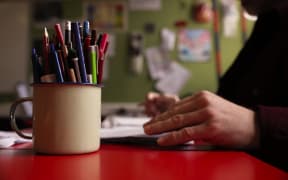
Principals say the latest school attendance figures signal a turning point - but a complete U-turn is a long way off, and the associate education minister is still not smiling. Audio
Teacher underfed children, locked them in seclusion
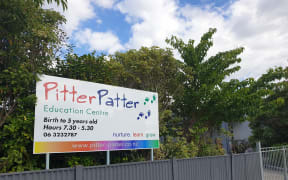
Pauline Murphy has been censured and struck off after being found guilty of locking children in a room, smacking them and feeding them out-of-date food.
- Prime Minister Christopher Luxon meets KPIs on Southeast Asia mission
- How the coolest little capital is shrinking
- Government releases list of organisations shoulder-tapped for fast-track consents
Get the RNZ app
for ad-free news and current affairs

Top News stories
- 'Weird, crazy': Grieving family reveals new details about fatal ram attack
- Thousands of Kiwi Indians excluded from voting in election
- Wellington Phoenix keep A-League premiership hopes alive with draw against Newcastle Jets
- Iran signals no plan to retaliate against Israel after drone attack
Politics RSS
Follow RNZ News
- NAEYC Login
- Member Profile
- Hello Community
- Accreditation Portal
- Online Learning
- Online Store
Popular Searches: DAP ; Coping with COVID-19 ; E-books ; Anti-Bias Education ; Online Store
Children's Books
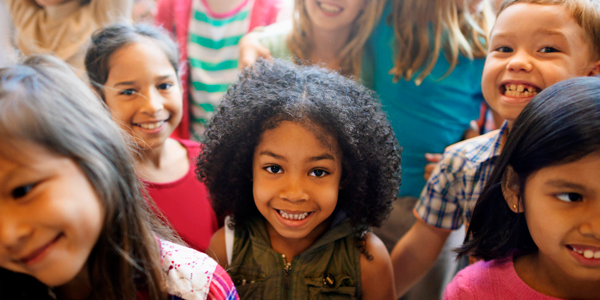
You are here
Most recent.
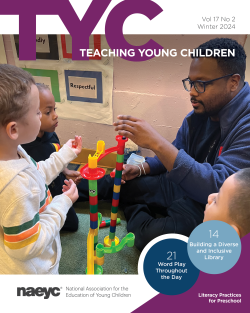
Winter 2024
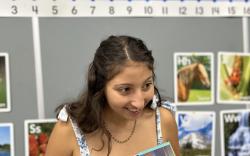
Embracing Disability Identity: Representation in Literature as a Tool Towards Inclusivity
Authored by.
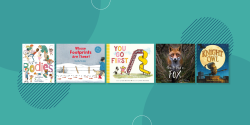
The Reading Chair
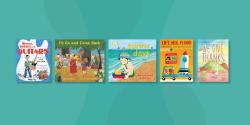
The Reading Chair: Summer 2023
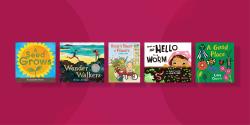
The Reading Chair: Spring 2023
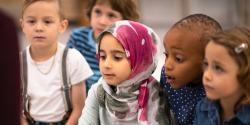
Promoting Language Learning Through Dual Language and Non-English Books
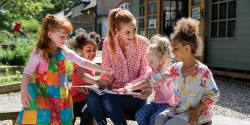
Ask Hello. Favorite Books to Add to Your Shelf
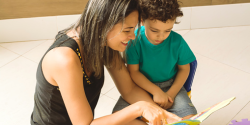
Extending the Math in Picture Books
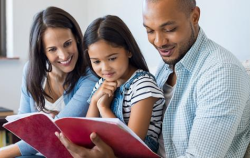
Now Read This! Three Sentence Stems to Support Children’s Language During Read Alouds

The Reading Chair: Summer 2022
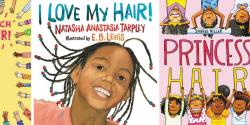
Now Read This! Supporting Positive Racial Identity with Literacy-Based Math
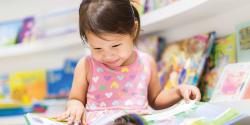
Make Picture Books Count: Effective Ways to Integrate Math and Literacy

The Reading Chair: Spring 2022
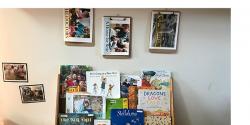
The Play’s the Story: Creating Play Story Booklets to Encourage Literacy Behaviors in a Preschool Classroom

The Reading Chair: Winter 2021
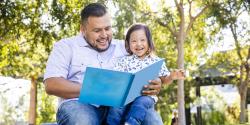
Including Disability in Early Childhood Curricula: Evaluating and Using Children’s Books
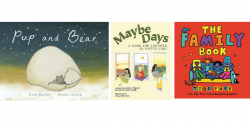
Now Read This: What About Children in Foster Care?
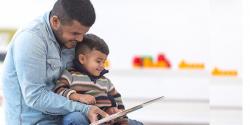
Select High-Quality Texts from the Fall 2021 Edition of Young Children
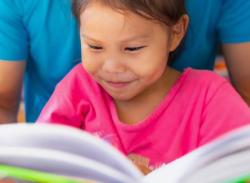
A List of High-Quality Texts from this Issue
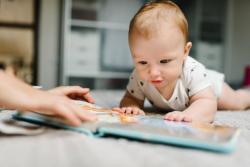
Rocking and Rolling. Reading Aloud with Infants and Toddlers

IMAGES
VIDEO
COMMENTS
17.)Leading Anti-Bias Early Childhood Programs: A Guide for Change (Early Childhood Education) by Louise Derman-Sparks, Debbie LeeKeenan, & John Nimmo. This book is a catalyst for change in the classroom. Louise Derman-Sparks, Debbie LeeKeenan, and John Nimmo challenge everyone- even the most resistant to change.
Book Recommendations. NAEYC publishes well-respected books that reflect the latest research on a range of topics in early childhood education. Take a look at our book recommendations! For information about ordering our resources, please go here . NAEYC is committed to providing the best possible resources to support effective teaching and ...
SAGE Publications, Jan 9, 2019 - Education - 496 pages. Introduction to Early Childhood Education provides current and future educators with a highly readable, comprehensive overview of the field. The underlying philosophy of the book is that early childhood educators' most important task is to provide a program that is sensitive to and ...
avg rating 4.58 — 26 ratings — published. Want to Read. Rate this book. 1 of 5 stars 2 of 5 stars 3 of 5 stars 4 of 5 stars 5 of 5 stars. Books shelved as early-childhood-education: The Whole-Brain Child: Revolutionary Strategies to Nurture Your Child's Developing Mind by Daniel J. Siegel, ...
Explore our list of Early Childhood Education Books at Barnes & Noble®. Get your order fast and stress free with free curbside pickup. true https: ... Early Childhood Education. 1- 20 of 3170 results Grid View Grid. List View List. Filter. Sort: Grid View Grid. List View List ...
The 20 best early childhood education books recommended by Nina Shapiro, Joan Hoffman, Library Journal and Sharon Lynn Kagan. Categories Experts Newsletter. BookAuthority; BookAuthority is the world's leading site for book recommendations, helping you discover the most recommended books on any subject. Explore; Home; Best Books; New Books ...
A brief, reader-friendly introduction to early childhood education in today's world . Fundamentals of Early Childhood Education is appreciated for its practical, applied approach and its engaging chapter features that look at every aspect of the field ― early childhood programs, professionals in practice, diversity, technology issues, and ethical decision making.
"Great book for helping students identify developmentally appropriate standards and practices." -- Lisa White "A foundational text for early childhood education topics that is cognizant of and responsive to the current practices and concerns that recent brain-based research encourages EC practitioners to be aware of and proficient in for the success of the whole child.
A must-read for early childhood educators committed to social justice and equity in early childhood education. —Lorena Mancilla, Director, WIDA Early Years at the Wisconsin Center for Education Research This book brings the NAEYC advancing equity position statement to life.
The Young Child and Mathematics, Third Edition, focuses on finding, encouraging, and supporting math thinking throughout the day. Math learning opportunities are highlighted both inside and outside of spaces typically thought of as "math time.". Rather than a detailed account of what is involved in early childhood mathematics, this book ...
1-48 of over 10,000 results for "early childhood education books" Results. Early Childhood Education: Preparation in Teaching and Administration. by Jennifer Smeddy. 5.0 out of 5 stars. 2. Paperback. $125.00 $ 125. 00. FREE delivery Fri, Mar 22 . Other formats: Kindle, Hardcover.
This book addresses a wide range of topics pertaining to curriculum design and inquiry with young children. Learning through Play is a central focus of the book. However, the authors introduce the reader to the most common approaches to early childhood education. Content Accuracy rating: 5
Carmen McGuinness. from $4.89. An Observation Survey of Early Literacy Achievement. Marie M. Clay. from $4.19. The Educated Child: A Parents Guide From Preschool Through Eighth Grade. John T.E. Cribb Jr. from $4.79. Commonalities among these books on Early Childhood Education include a focus on child development, the importance of play-based ...
Has an experience as an invited editor of the International Journal of Early Years Education (2011), European Early Childhood Education Research Journal (2014); published book Vygotsky's Theory in Early Childhood Education and Research (edited by Nikolay Veraksa and Sonja Sheridan) - Routledge, 2018.
Stay up-to-date on issues in early childhood education and hear perspectives from a wide range of educators. Position Statements. ... She has authored over 60 publications, including research articles, books, book chapters, and early childhood language and literacy curricula. She has served as principal investigator or co-principal investigator ...
Description. Drawing upon in-depth analyses of Lev Vygotsky's theories of early childhood and investigating the ways in which his ideas are reflected in contemporary educational settings, this book brings into sharp relief the numerous opportunities for preschool learning and development afforded by Vygotskian approaches. Discussion of recent ...
Early language and literacy development. Strong early language and literacy skills set the stage for later success in school and in life. Our textbooks, tools, and curricula fully prepare you to help close the 30 million word gap some children experience, support dual language learners, identify kids who need extra help with early literacy skills, and put all young children on the path to ...
There are 6 modules in this course. This course is targeted toward individuals wishing to operate a family day care center, and it covers topics including the fundamentals of early childhood development; the importance of play and Developmentally Appropriate Practice; and the significance of building strong family-educator relationships and how ...
Language learning begins at birth. The early literacy period — when reading, writing and language skills develop — occurs from ages 0 to 3. These years are foundational for later language ...
Our partners in online professional development. Continu ed partners with Region 9 Head Start Association to offer a robust series of online courses designed to fit the needs of early childhood educators. Continu ed offers online courses that meet the learning requirements for the Child Development Associate® (CDA) Credential™ and CDA renewal.
Advancing Equity and Embracing Diversity in Early Childhood Education: Elevating Voices and Actions. Coaching with Powerful Interactions: A Guide for Partnering with Early Childhood Teachers, Second Edition. Ethics and the Early Childhood Educator: Using the NAEYC Code, Third Edition. From Survive to Thrive: A Director's Guide for Leading an ...
April 2024 — Welcome to the April edition of the Inside Erikson newsletter! April is a special month for the field of early childhood as we celebrate International Children's Book Day (April 2), Autism Acceptance Month and NAEYC's Week of the Young Child (April 6-12). As a thought leader in the field, Erikson was honored to host Illinois Senator Dick Durbin at our Center for Children and ...
Importance of transition to school. Research tells us that a successful transition to school helps improve children's educational and social outcomes. A good transition will help prepare children to make new friends, learn routines, and develop a sense of belonging within the new school environment. It will also help their school to recognise ...
Learn about and purchase the best books and resources to support young children's learning and development. Young Children. Stay up to date with research-based, teacher-focused articles on birth to age 8 in our award-winning, peer-reviewed journal. ... Stay up-to-date on issues in early childhood education and hear perspectives from a wide ...
The government has announced changes to the early childhood education sector, which it says will make it easier for new centres to be set up. ACT leader David Seymour has announced the moves at a Wellington ECE centre, where he read to children while sitting next to a book featuring Jacinda Ardern, before telling reporters the former prime minister was an authoritarian.
Including Disability in Early Childhood Curricula: Evaluating and Using Children's Books. When planned, implemented, and individualized to meet children's strengths and needs, inclusive practices can lead to positive outcomes for all children in the form of increased access, membership, participation, friendships, and support.